

43 Creative writing exercises

A selection of fun creative writing exercises that can be completed solo, or with a group. Some are prompts to help inspire you to come up with story ideas, others focus on learning specific writing skills.
I run a Creative Writing Meetup for adults and teens in Montpellier or online every week. We start with a 5 to 20 minute exercise, followed by an hour and a half of silent writing, during which each participant focuses on their own project. Every exercise listed below has been run with the group and had any kinks ironed out. Where the exercises specify a number of people, if you have a larger group, simply split everyone up into smaller groups as appropriate.
The solo exercises are ideal to help stimulate your mind before working on a larger project, to overcome writer’s block, or as stand-alone prompts in their own right. If a solo exercise inspires you and you wish to use it with a larger group, give every member ten minutes to complete the exercise, then ask anyone who wishes to share their work to do so in groups of 3 or 4 afterwards.
Looking for something quick to fire your imagination? Check out these creative writing prompts for adults .
Writing Retreat in South France

A note on running exercises remotely
While you can enjoy the exercises solo, they are also designed for online writing groups using Zoom, WhatsApp, or Discord.
If you're running a group and follow a ' Shut Up and Write ' structure, I recommend connecting on WhatsApp (for example) first, doing the exercise together, sharing writing samples as needed. Next, write in silence for an hour and a half on your own projects, before reconnecting for a brief informal chat at the end. This works great with small remote groups and is a way to learn new techniques, gain online support, and have a productive session.
If you have a larger online group, it's worth looking into Zoom, as this has a feature called Breakout Rooms . Breakout Rooms let you split different writers into separate rooms, which is great for group activities. The free version of Zoom has a 40 minute limit, which can be restrictive, but Zoom Pro is well worth it if you're going to use it on a regular basis. In my experience, Zoom has a better connection than Facebook chat or WhatsApp.
A Letter From Your Character To You

Spend ten minutes writing a letter from a character in your novel to you , the author, explaining why you should write about them. This serves three purposes:
- As you write, it helps you get into the mindset of the character. Ask yourself how they would language this letter and what they would consider important.
- It's motivating to know that your character wants you to write about them.
- If your goal is to publish a complete work of fiction one day, whether it be a novel, a play or a movie script, you will want to contact an agent or publisher. This helps you practice in an easy, safe way.
If you're doing this exercise with a group of teens or adults, and some of the group haven't already started working on their masterpiece, they can instead choose any fictional novel they love. Ask participants to imagine that a character within the book wrote to the author in the first place to ask them to write their story. How did they plead their case?
The Opening Sentence

The opening sentence has to grab the reader's attention and make them want to keep reading. Many authors achieve this by starting with an action scene. In modern literature, it's best to avoid starting with someone waking up, or a description of the weather. In this exercise the task is to write an opening sentence either to a book you're currently writing, or simply for an imaginary piece of literature. Here are some of my favourite opening sentences to get you going:
It was a bright cold day in April, and the clocks were striking thirteen.
George Orwell , 1984
The Golem's life began in the hold of a steamship.
Helene Wecker , The Golem and the Djinni
All happy families are alike; each unhappy family is unhappy in its own way.
Leo Tolstoy , Anna Karenina
It wasn't a very likely place for disappearances, at least at first glance.
Diana Gabaldon , Outlander
You better not never tell nobody but God.
Alice Walker , The Color Purple
The cage was finished.
Gabriel Garcia Marquez , Balthazar’s Marvelous Afternoon
Imagine that you are living your life out of order: Lunch before breakfast, marriage before your first kiss.
Audrey Niffenegger , The Time Traveler's Wife
Far out in the uncharted backwaters of the unfashionable end of the western spiral arm of the Galaxy lies a small unregarded yellow sun.
Douglas Adams , The Hitchhiker's Guide to the Galaxy
There are a plethora of ways you can start a book, however two ways that help engage the reader immediately are:
- Set the scene in as few words as possible, so the reader immediately knows what's happening and wants to know what happens next. The scene must be original and create a vivid image in the reader's mind.
- Surprise the reader with an unusual event or usual point of view.
Spend 5 minutes working on your own opening sentence, then share it with the other participants.
Make your protagonist act!
Exercise for 2 writers, or can be done solo.

According to John Gardner:
"Failure to recognise that the central character must act, not simply be acted upon, is the single most common mistake in the fiction of beginners."
Spend 5 minutes writing a scene where the protagonist is passive in a conversation with one other character. It could be that the other character says something dramatic, and the protagonist just listens, or it could be anything else of your choice!
Once the 5 minutes is up, swap papers with another writer. If you're using Zoom, or working online, send it to each other in a private chat. Now the other person spends 8 minutes rewriting the scene to make the protagonist as active as possible. This might include:
Read both scenes together. Which makes you want to keep on reading?
If you're doing this as a solo writing exercise, simply complete both parts yourself.
- Showing the emotion this evokes.
- Getting them to disagree with the other character.
- Showing how they respond physically (whether it's as a physical manifestation of how they feel, or a dramatic gesture to make a point).
Overcoming writer's block
.webp)
Are you staring at a blank page or stuck for any story ideas? This exercise will help anyone who's experiencing writer's block with a particular piece of writing. If this isn't you, that's great, others will value your input!
If anyone has a particular scene they're stuck with (a pool of blood on the floor they have no explanation for, a reason why the rich lady just walked into a particular pub, etc.) then at the start of the exercise everyone briefly describes their scenes (if working online with a large group, typing it into the chat might be best). Everyone then chooses one scene to use as a writing prompt to write a short story for 10-15 minutes.
Afterwards, split into small groups if necessary, and read out how you completed someone else's writing prompt. As everyone listens to everyone else's ideas, this can be a wonderful source of inspiration and also improves your writing. As an alternative solo exercise, try free writing. With free writing, simply write as quickly as you can on the topic without editing or censoring yourself - just let your creative juices flow. If you're not sure what happens next, brainstorm options on the page, jot down story ideas, or just put, "I don't know what happens next." Keep going and ideas will come.
Writing Character Arcs

There are several different types of character arc in a novel, the 3 most common being:
For this exercise choose either a positive or negative character arc. Spend 8 minutes writing a scene from the start of a novel, then 8 minutes writing a scene towards the end of a novel showing how the character has developed between the two points. Don't worry about including how the character has changed, you can leave that to the imagination.
The point here is to capture the essence of a character, as they will be the same, but show their development.
- Positive - Where a character develops and grows during the novel. Perhaps they start unhappy or weak and end happy or powerful.
- Negative - Where a character gets worse during a novel. Perhaps they become ill or give in to evil tendencies as the novel progresses.
- Flat - In a flat character arc the character themself doesn't change much, however the world around them does. This could be overthrowing a great injustice, for example.
Sewing Seeds in Your Writing

In this exercise, we will look at how to sew seeds. No, not in your garden, but in your story. Seeds are the tiny hints and indicators that something is going on, which influence a reader's perceptions on an often unconscious level. They're important, as if you spring a surprise twist on your readers without any warning, it can seem unbelievable. Sew seeds that lead up to the event, so the twists and turns are still surprising, but make intuitive sense. Groups : Brainstorm major plot twists that might happen towards the end of the novel and share it in a Zoom chat, or on pieces of paper. Choose one twist each. Individuals : Choose one of the following plot twists: - Your friend is actually the secret son of the king. - Unreliable narrator - the narrator turns out to be villain. - The monster turns out to be the missing woman the narrator is seeking. - The man she is about to marry happens to already have a wife and three kids.
Write for ten minutes and give subtle hints as to what the plot twist is. This is an exercise in subtlety. Remember, when the twist occurs, it should still come as a surprise.

This is a fun writing activity for a small group. You’ve found a magic potion labelled ‘Cat Chat’ and when you drink it, you turn into whichever animal you’re thinking about; but there’s a problem, it also picks up on the brainwaves of other people near you!
Everyone writes down an animal in secret and then reveals it to the other writers. The spell will turn you into a creature that combines elements of all the animals. Each person then spends 5 minutes writing down what happens when they drink the potion.
After the 5 minutes is up, everyone shares their story with the other participants.
If you enjoy this exercise, then you may also want to check out our Fantasy and Sci-Fi writing prompts full of world building, magic, and character development prompts..

Joe Brainard wrote a novel called: I Remember It contains a collection of paragraphs all starting with “I remember”. This is the inspiration for this exercise, and if you’re stuck for what to write, is a great way to get the mental gears turning. Simply write “I remember” and continue with the first thing that pops into your head.
Spend 5 minutes writing a short collection of “I remember” stories.
Here are a couple of examples from Joe Brainard’s novel:
“I remember not understanding why people on the other side of the world didn't fall off.”
“I remember waking up somewhere once and there was a horse staring me in the face.”
Giving feedback to authors

If you're running a workshop for more experienced adult authors and have at least an hour, this is a good one to use. This is the longest exercise on this page, but I felt it important enough to include.
Give each author the option to bring a piece of their own work. This should be double spaced and a maximum of 3 pages long. If you're running a workshop where not everyone is likely to bring a manuscript, ask everyone who wants to bring one to print two copies each. If someone forgets but has a laptop with them, the reader can always use their laptop.
Print out a few copies and hand them around to everyone in the workshop of the guide on: 'How to give constructive feedback to writers'
Each author who brought a sample with them then gives them to one other person to review. They write their name on the manuscript in a certain colour pen, then add any comments to it before passing it to a second person who does the same (commenting on the comments if they agree or disagree).
Then allow 5 minutes for everyone to discuss the feedback they've received, ensuring they are giving constructive feedback.
The Five Senses

Painting by Giovanni Battista Manerius - The Five Senses
Choose a scene and write it for 5 minutes focusing on one sense, NOT sight. Choose between:
Hearing Taste Smell Touch
This can be internal as well as external (I heard my heartbeat thudding in my ears, or I smelt my own adrenaline).
After the 5 minutes stop and everyone reads it out loud to each other. Now write for another 5 minutes and continue the other person's story, but do NOT use sight OR the sense they used.
You can use any sense to communicate the essentials, just focus on creating emotions and conveying the story with the specific sense(s).
If you need some writing prompts, here are possible scenes that involve several senses:
- Climbing through an exotic jungle
- Having an argument that becomes a fight
- A cat's morning
- Talking to someone you're attracted to
Show don't tell
2 or 3 people

A lot of writing guides will advise you to, "Show, don't tell". What does this actually mean?
If you want to evoke an emotional reaction from your reader, showing them what is happening is a great way to do so. You can approach this in several ways:
Split up into pairs and each person writes down a short scene from a story where they "tell" it. After this, pass the description of the scene to your partner and they then have 5 minutes to rewrite it to "show" what happened. If there are an odd number of participants, make one group of three, with each person passing their scene clockwise, so everyone has a new scene to show. After the 5 minutes, for small groups everyone reads their new description to everyone else, or for large groups, each person just reads their new scene to their partner.
- Avoid internal dialogue (thinking), instead have your protagonist interact with other people, or have a physical reaction to something that shows how s/he feels. Does their heart beat faster? Do they notice the smell of their own adrenaline? Do they step backwards, or lean forwards?
- Instead of using an adjective like creepy, e.g. "Mary entered the creepy house", show why the house is creepy through description and in the way the protagonist responds - "The light streamed through the filthy skylight, highlighting the decomposing body of a rat resting on top of it. As Mary stepped inside, she felt a gust of freezing air brush past her. She turned, but there was nothing there..."
World building

World building is the art of conveying the magic of living in a different world, whether it's a spaceship, a medieval castle, a boat, or simply someone's living room. To master world building, it's not necessary to know every intricate detail, rather to convey the experience of what it would be like to live there.
Choose one of the above images as a prompt and spend 10 minutes writing a scene from the perspective of someone who is seeing it for the first time. Now, move your character six months forward and imagine they've spent the last six months living or working there. Write another scene (perhaps with an additional character) using the image as a background, with the events of the scene as the main action.
Click the above image for a close-up.
Gossiping about a character as if they're a friend.

Judy Blume says that she tells her family about her characters as if they’re real people.
Chris Claremont said, "For me, writing the 'X-Men' was easy - is easy. I know these people, they're my friends."
Today’s exercise has 2 parts. First, spend 5 minutes jotting down some facts about a character you’ve invented that might come up if you were telling your friends about them. Either choose a character in something you’ve already written, or invent one from scratch now.
Answer the questions:
What are they up to? How are they? What would you say if you were gossiping about them?
Then split up into groups of 4 to 6 writers. 2 volunteers from each group then role-play talking about their character as if they were a friend (perhaps another character in the story). The other participants will role-play a group of friends gossiping about the character behind their back and ask questions. If you don’t know the answer, invent it!
Degrees of Emotion Game

This is based on an acting game, to help actors understand how to perform with different degrees of emotion.
Ask everyone to write the following 4 emotions:
For groups of 5 or less, write down numbers starting with 1 and going up until everyone has a number, then give them out in order. For groups of 6 or more, divide groups into 3's, 4's or 5's.
Each person has to write a scene where the protagonist is alone and is only allowed to say a single word, e.g. "Banana". The writer with number 1 should write the scene with a very low level of the emotion (e.g. happiness), number 2 increases the intensity a bit and the highest number writes a scene with the most intense emotion you can possibly imagine.
Once each writer has written about happiness, rotate the numbers one or two spaces, then move onto anger, then fear, then sadness.
It can help to give everyone numbers showing the intensity of the emotions to write about at the start of the exercise, in which case you may wish to print either the Word or PDF file, then use the ones corresponding to 3, 4 or 5 writers.

Everyone shares their scene with the other course participants.
Three birds, one line

The first paragraph of a surprising number of best-selling novels serves multiple purposes. These are to:
- Establish a goal
- Set the scene
- Develop a character
Nearly every chapter in a novel also serves all three purposes. Instead of establishing a goal though, the protagonist either moves towards it, or encounters an obstacle that hinders them from achieving it.
Some books manage to meet all three purposes with their opening lines, for example:
Mr and Mrs Dursley, of number four, Privet Drive, were proud to say that they were perfectly normal, thank you very much.
J.K. Rowling , Harry Potter and the Philosopher's Stone
A little more than one hundred days into the fortieth year of her confinement, Dajeil Gelian was visited in her lonely tower overlooking the sea by an avatar of the great ship that was her home.
Iain M. Banks , Excession
"We should start back," Gared urged as the woods began to grow dark around them.
George R.R. Martin , A Game of Thrones
For this exercise write a sentence or short paragraph that serves all three purposes. If you're already writing a novel, then see if you can do this for the first line in a chapter. If not, choose any combination from the following table:
| Escape | Penthouse suite | Reckless |
| Succeed in love | Castle | Cowardly |
| Survive | Graveyard | Greedy |
Blind Date on Valentine's Day (Exercise for Adults)

In pairs one writer spends a minute or two describing a character they're writing about, or alternatively they can describe a celebrity or someone from a work of fiction. The next writer then describes their character.
The story is that these 2 characters (or in my case, person and alien, as I'm writing a sci-fi) have accidentally ended up on a blind date with each other. Perhaps the waiter seated them in the wrong location, perhaps it's an actual blind date, or perhaps they met in some other fashion the writers can determine.
Now spend 10 minutes discussing what happens next!
A Success (Works best for online groups)

This exercise works best for online groups, via Zoom, for example. The instructions to give are:
"In a few words describe a success in your life and what it felt like to achieve it. It can be a small victory or a large one."
Share a personal example of your own (mine was watching my homeschooled sons sing in an opera together).
"Once you have one (small or large), write it in the chat.
The writing exercise is then to choose someone else's victory to write about for 10 minutes, as if it was the end of your own book.
If you want to write for longer, imagine how that book would start. Write the first part of the book with the ending in mind."
This is great for reminding people of a success in their lives, and also helps everyone connect and discover something about each other.
Your dream holiday

You’re going on a dream holiday together, but always disagree with each other. To avoid conflict, rather than discuss what you want to do, you’ve decided that each of you will choose a different aspect of the holiday as follows:
- Choose where you’ll be going – your favourite holiday destination.
- Choose what your main fun activity will be on the holiday.
- Decide what mode of travel you’ll use to get there.
- If there’s a 4 th person, choose what you’ll eat on the holiday and what you’ll be wearing.
Decide who gets to choose what at random. Each of you then writes down your dream holiday destination/activity/travel/food & clothes in secret. Next spend 5 minutes discussing your dream holiday and add any other details you’d like to include, particularly if you’re passionate about doing something in real life.
Finally, everyone spends another 5 minutes writing down a description of the holiday, then shares it with the others.

A haiku is a traditional Japanese form of non-rhyming poetry whose short form makes it ideal for a simple writing exercise.
They are traditionally structured in 3 lines, where the first line is 5 syllables, the second line is 7 syllables, and the third line is 5 syllables again. Haiku tend to focus on themes of nature and deep concepts that can be expressed simply.
A couple of examples:
A summer river being crossed how pleasing with sandals in my hands! Yosa Buson , a haiku master poet from the 18 th Century.
And one of mine:
When night-time arrives Stars come out, breaking the dark You can see the most
Martin Woods
Spend up to 10 minutes writing a haiku. If you get stuck with the 5-7-5 syllable rule, then don’t worry, the overall concept is more important!
See How to write a haiku for more details and examples.

Unlike a haiku, which is profound and sombre, a limerick is a light-hearted, fun rhyming verse.
Here are a couple of examples:
A wonderful bird is the pelican. His bill can hold more than his beli-can He can take in his beak Food enough for a week But I'm damned if I see how the heli-can.
Dixon Lanier Merritt, 1910
There was a young lady named Bright, Whose speed was far faster than light; She started one day In a relative way, And returned on the previous night.
Arthur Henry Reginald Buller in Punch, 1923
The 1 st , 2 nd and 5 th line all rhyme, as do the 3 rd and 4 th line. The overall number of syllables isn’t important, but the 3 rd and 4 th lines should be shorter than the others.
Typically, the 1 st line introduces the character, often with “There was”, or “There once was”. The rest of the verse tells their story.
Spend 10 minutes writing a limerick.
Time Travel - Child, Adult, Senior

Imagine that your future self as an old man/woman travels back in time to meet you, the adult you are today. Alternatively, you as a child travels forward in time to meet yourself as an adult. Or perhaps both happen, so the child you, adult you, and senior you are all together at the same time. In story form write down what happens next.
Participants then share their story with other writers either in small groups, or to the whole group.
Focus on faces
Solo exercise.

One challenge writers face is describing a character. A common mistake is to focus too much on the physical features, e.g. "She had brown eyes, curly brown hair and was five foot six inches tall."
The problem with this is it doesn't reveal anything about the character's personality, or the relationship between your protagonist and the character. Your reader is therefore likely to quickly forget what someone looks like. When describing characters, it's therefore best to:
- Animate them - it's rare that someone's sitting for a portrait when your protagonist first meets them and whether they're talking or walking, it's likely that they're moving in some way.
- Use metaphors or similes - comparing physical features to emotionally charged items conjures both an image and a sense of who someone is.
- Involve your protagonist - if your protagonist is interacting with a character, make it personal. How does your protagonist view this person? Incorporate the description as part of the description.
- Only give information your protagonist knows - they may know if someone is an adult, or a teenager, but they won't know that someone is 37 years old, for example.
Here are three examples of character descriptions that leave no doubt how the protagonist feels.
“If girls could spit venom, it'd be through their eyes.” S.D. Lawendowski, Snapped
"And Ronan was everything that was left: molten eyes and a smile made for war." Maggie Stiefvater, The Dream Thieves
"His mouth was such a post office of a mouth that he had a mechanical appearance of smiling." Charles Dickens
Spend 5 minutes writing a character introduction that is animated, uses metaphors or similes and involves your protagonist.
If working with a group, then form small groups of 3 or 4 and share your description with the rest of the group.
Onomatopeai, rhyme and alliteration
.webp)
Today's session is all about sound.
Several authors recommend reading your writing out loud after you've written it to be sure it sounds natural. Philip Pullman even goes as far as to say:
"When I’m writing, I’m more conscious of the sound, actually, than the meaning. I know what the rhythm of the sentence is going to be before I know what the words are going to be in it."
For today's exercise, choose the name of a song and write for 10 minutes as if that's the title for a short story. Focus on how your writing sounds and aim to include at least one onomatopoeia, rhyme or alliteration. At the end of the 10 minutes, read it out loud to yourself, or to the group.
Alliterations
An alliteration example from Samuel Taylor Coleridge’s “The Rime of the Ancient Mariner”
The fair breeze blew, the white foam flew, The furrow followed free; We were the first that ever burst Into that silent sea.
Onomatopoeias
Buzz, woof, quack, baa, crash, purr, beep, belch,...
The alphabet story - creating a story as a group

This is a novel way to write a story as a group, one word at a time. The first person starts the story that begins with any word starting with “A”, the next person continues the story with a word starting with “B”, and so on.
Keep going round until you have completed the alphabet. Ideally it will all be one sentence, but if you get stuck, start a new sentence. Don’t worry if it doesn’t make complete sense!
It can be tricky to remember the alphabet when under pressure, so you may wish to print it out a couple of times, so the storytellers can see it if they need to, this is particularly helpful if you have dyslexics in the group.
A B C D E F G H I J K L M N O P Q R S T U V W X Y Z
Here’s an example of an alphabet story:
A Band Can Dance Each Friday, Ghostly Hauntings In Jail Kill Lucky Men, Nobody Or Perhaps Quiet Rats, Still That Unifies Villains Who X-Ray Your Zebras.
As I mentioned, it doesn’t need to make sense!
A question or two
Small or large groups

The standard format in our group is a short writing exercise followed by an hour and a half of silent writing on our projects.
At one point I felt like we'd done a lot of small group exercises, and wanted to gain an insight into what everyone was working on, so we did the following exercise instead:
Go round the table and ask everyone to briefly talk about their writing. Each person then asks one or two yes/no questions.
Everyone responds either by raising their hand for 'yes' or shaking their heads for 'no'. You can also leap up and down to indicate a very strong 'yes'.
Questions can be about anything, and you can use them either to help guide your writing or to help find other people in the group who have similar interests.
Here are some random examples you might ask:
- I want to write a romance novel and am considering setting it in Paris, a traditional romantic setting, or Liverpool which is a less obvious setting. Who thinks Liverpool would be best?
- I need to know more about the life of a farmer. Has anyone got farming experience who I can interview in exchange for a drink?
- My character gets fired and that night goes back to his office and steals 35 computers. Does that sound realistic as the premise of a story?
This works best when you give participants some advance notice, so they have time to think of a question.
Murder Mystery Game
Groups of 3 or 4

This exercise takes 20-30 minutes and allows participants to create a murder mystery outline together.
Phase 1 (3 minutes)
- Split into groups of 3 or 4
- Decide as a group where the murder occurs (e.g. the opera house, a bar, a casino)
- Decide one person who will write the details of the victim and the murder itself. Everyone else writes the details of one suspect each.
- The ‘victim author’ then invents a few extra details about the scene of the crime, who the victim was (a teenage punk, an adult opera singer, etc.) and the murder weapon and summarises this to the others.
Phase 2 (10 minutes)
Each person then writes a police report as if they are either describing the scene of the crime, or recording the notes from their interview with a single suspect:
Write the following:
- 1 line description of the victim.
- When they were last seen by a group of witnesses (and what they were doing).
- How the murder occurred in more detail based on the evidence available.
Write the following (from the perspective of the investigator):
- 1 line description of the suspect
- What they said during the interview (including what they claim to have doing when the murder occurs).
- A possible motivation (as determined by the police from other witnesses).
Phase 3 (5 minutes)
- Each person reads out their police reports to the other members of their small group
- As a group, decide who the murderer was and what actually happened
See more ideas on creating murder mystery party games
The obscure movie exercise

Pick a famous movie and spend 5 minutes writing a scene from it from an unusual perspective. Your aim is to achieve a balance between being too obscure and making it too obvious. Feel free to add internal dialogue.
At the end of the 5 minutes, everyone reads their movie scene to the others and all the other participants see if they can guess what the movie is.
How to hint at romantic feelings

Write a scene with two people in a group, where you hint that one is romantically interested in the other, but the feelings aren’t reciprocated.
The goal of this exercise is to practice subtlety. Imagine you are setting a scene for the future where the characters feelings will become more important. Choose a situation like a work conference, meeting with a group of friends, etc. How do you indicate how the characters feel without them saying it in words?
Some tips for hinting at romantic feelings:
- Make the characters nervous and shy.
- Your protagonist leans forward.
- Asks deeper questions and listens intently.
- Finds ways to be close together.
- Mirrors their gestures.
- Gives lots of compliments.
- Makes eye contact, then looks away.
- Other people seem invisible to your protagonist.
A novel idea

Take it in turns to tell everyone else about a current project you’re working on (a book, screenplay, short story, etc.)
The other writers then brainstorm ideas for related stories you could write, or directions your project could take. There are no right or wrong suggestions and the intention is to focus on big concepts, not little details.
This whole exercise takes around 15 minutes.
Creative writing prompts
Exercise for groups of 3-5

If you're in larger group, split up into groups of 3 or 4 people.
Everyone writes the first line of a story in the Zoom chat, or on paper. Other people can then choose this line as a writing prompt.
For this exercise:
- Say who the protagonist is.
- Reveal their motivation.
- Introduce any other characters
Once everyone's written a prompt, each author chooses a prompt (preferably someone eles's, but it can be your own if you feel really inspired by it.) Then write for 10 minutes using this prompt. See if you can reveal who the protagonist is, what their motivation is (it can be a small motivation for a particular scene, it doesn't have to be a huge life goal), and introduce at least one new character.
Take turns reading out your stories to each other.
- Write in the first person.
- Have the protagonist interacting with an object or something in nature.
- The challenge is to create intrigue that makes the reader want to know more with just a single line.
Creative story cards / dice

Cut up a piece of paper and write one word on each of the pieces of paper, as follows:
| Robot | Happy | Whirlwind | Angry |
Give each participant a couple of pieces of paper at random. The first person says the first sentence of a story and they must use their first word as part of that sentence. The second person then continues the story and must include their word in it, and so on. Go round the group twice to complete the story.
You can also do this creative writing exercise with story dice, your own choice of words, or by asking participants to write random words down themselves, then shuffling all the cards together.
Alternative Christmas Story

Every Christmas adults tell kids stories about Santa Claus. In this exercise you write a Christmas story from an alternative dimension.
What if every Christmas Santa didn't fly around the world delivering presents on his sleigh pulled by reindeer? What if gnomes or aliens delivered the presents? Or perhaps it was the gnomes who are trying to emulate the humans? Or some other Christmas tradition entirely that we humans have never heard of!
Group writing exercise
If you're working with a group, give everyone a couple of minutes to write two possible themes for the new Christmas story. Each theme should be 5 words or less.
Shuffle the paper and distribute them at random. If you're working online, everyone types the themes into the Zoom or group chat. Each writer then spends 10 minutes writing a short story for children based on one of the two themes, or their own theme if they really want to.
If working alone, choose your own theme and spend 15 minutes writing a short story on it. See if you can create the magic of Christmas from another world!
Murder Mystery Mind Map

In a murder mystery story or courtroom drama, there's often conflicting information and lots of links between characters. A mind map is an ideal way to illustrate how everything ties together.
Split into groups of 3 or 4 people each and place a blank piece of A3 paper (double the size of A4) in the middle of each group. Discuss between you who the victim is and write their name in the middle of the piece of paper. Then brainstorm information about the murder, for example:
Feel free to expand out from any of these, e.g. to include more information on the different characters involved.
The idea is that everyone writes at the same time! Obviously, you can discuss ideas, but anyone can dive in and write their ideas on the mind map.
- Who was the victim? (job, appearance, hobbies, etc.)
- Who did the victim know?
- What were their possible motivations?
- What was the murder weapon?
- What locations are significant to the plot?
New Year’s resolutions for a fictional character

If you’re writing a piece of fiction, ask yourself how your protagonist would react to an everyday situation. This can help you to gain a deeper insight into who they are.
One way to do this is to imagine what their New Year’s resolutions would be.
If completing this exercise with a group, limit it to 3 to 5 resolutions per person. If some participants are historical fiction or non-fiction writers, they instead pick a celebrity and either write what their resolutions will be, or what their resolutions should be, their choice.
Verb Noun Fiction Exercise (Inspired by Stephen King)

Stephen King said, "I believe the road to hell is paved with adverbs, and I will shout it from the rooftops."
He also said, "Take any noun, put it with any verb, and you have a sentence. It never fails. Rocks explode. Jane transmits. Mountains float. These are all perfect sentences. Many such thoughts make little rational sense, but even the stranger ones (Plums deify!) have a kind of poetic weight that’s nice."
In this fiction writing exercise, start by brainstorming (either individually or collectively) seven verbs on seven different pieces of paper. Put those aside for later. Now brainstorm seven nouns. Randomly match the nouns and verbs so you have seven pairs. Choose a pair and write a piece of fiction for ten minutes. Avoid using any adverbs.
It’s the end of the world

It’s the end of the world! For 5 minutes either:
If working as a team, then after the 5 minutes is up each writer reads their description out to the other participants.
- Describe how the world’s going to end, creating evocative images using similes or metaphors as you wish and tell the story from a global perspective, or
- Describe how you spend your final day before the world is destroyed. Combine emotion and action to engage the reader.
7 Editing Exercises
For use after your first draft

I’ve listened to a lot of masterclasses on writing by successful authors and they all say variants of your first draft won’t be good and that’s fine. Terry Pratchett and Neil Gaiman summarise it the best:
“The first draft is just you telling yourself the story.”
Terry Pratchett
“For me, it’s always been a process of trying to convince myself that what I’m doing in a first draft isn’t important. One way you get through the wall is by convincing yourself that it doesn’t matter. No one is ever going to see your first draft. Nobody cares about your first draft. And that’s the thing that you may be agonising over, but honestly, whatever you’re doing can be fixed… For now, just get the words out. Get the story down however you can get it down, then fix it.”
Neil Gaiman
Once you’ve written your first draft, it will need editing to develop the plot, enhance the characters, and improve each scene in a myriad of ways – small and large. These seven creative editing exercises are designed to help with this stage of the process.
The First Sentence
Read the first paragraph of the novel, in particular the first sentence. Does it launch the reader straight into the action? According to On Writing and Worldbuilding by Timothy Hickson, “The most persuasive opening lines are succinct, and not superfluous. To do this, it is often effective to limit it to a single central idea… This does not need to be the most important element, but it should be a central element that is interesting.” Ask yourself what element your opening sentence encapsulates and whether it’s the best one to capture your readers’ attention.
Consistency
Consistency is crucial in creative writing, whether it’s in relation to location, objects, or people.
It’s also crucial for personality, emotions and motivation.
Look at scenes where your protagonist makes an important decision. Are their motivations clear? Do any scenes force them to choose between two conflicting morals? If so, do you explore this? Do their emotions fit with what’s happened in previous scenes?
As you edit your manuscript, keep the characters’ personality, emotions and motivation in mind. If their behaviour is inconsistent, either edit it for consistency, or have someone comment on their strange behaviour or be surprised by it. Inconsistent behaviour can reveal that a character is keeping a secret, or is under stress, so characters don’t always need to be consistent. But when they’re not, there has to be a reason.
Show Don’t Tell One
This exercise is the first in The Emotional Craft of Fiction by Donald Maass. It’s a writing guide with a plethora of editing exercises designed to help you reenergize your writing by thinking of what your character is feeling, and giving you the tools to make your reader feel something.
- Select a moment in your story when your protagonist is moved, unsettled, or disturbed… Write down all the emotions inherent in this moment, both obvious and hidden.
- Next, considering what he is feeling, write down how your protagonist can act out. What is the biggest thing your protagonist can do? What would be explosive, out of bounds, or offensive? What would be symbolic? … Go sideways, underneath, or ahead. How can your protagonist show us a feeling we don’t expect to see?
- Finally, go back and delete all the emotions you wrote down at the beginning of this exercise. Let actions and spoken words do the work. Do they feel too big, dangerous, or over-the-top? Use them anyway. Others will tell you if you’ve gone too far, but more likely, you haven’t gone far enough.
Show Don’t Tell Two
Search for the following words in your book:
Whenever these words occur, ask yourself if you can demonstrate how your characters feel, rather than simply stating it. For each occasion, can you use physiological descriptors (a racing heart), actions (taking a step backwards) or dialogue to express what’s just happened instead? Will this enhance the scene and engage the reader more?
After The Action
Find a scene where your characters disagree – in particular a scene where your protagonist argues with friends or allies. What happens next?
It can be tempting to wrap up the action with a quick resolution. But what if a resentment lingers and mistrust builds? This creates a more interesting story arc and means a resolution can occur later, giving the character development a real dynamic.
Review how you resolve the action and see if you can stretch out the emotions for a more satisfying read.
Eliminating the Fluff
Ensure that the words used don’t detract from the enormity of the events your character is going through. Can you delete words like, “Quite”, “Little”, or “Rather”?
Of “Very” Florence King once wrote: “ 'Very' is the most useless word in the English language and can always come out. More than useless, it is treacherous because it invariably weakens what it is intended to strengthen .” Delete it, or replace the word after it with a stronger word, which makes “Very” redundant.
“That,” is another common word used in creative writing which can often be deleted. Read a sentence as is, then reread it as if you deleted, “That”. If the meaning is the same, delete it.
Chapter Endings
When talking about chapter endings, James Patterson said, “At the end, something has to propel you into the next chapter.”
Read how each of your chapters finish and ask yourself does it either:
- End on a cliff hanger? (R.L. Stine likes to finish every chapter in this method).
- End on a natural pause (for example, you’re changing point of view or location).
Review how you wrap up each of your chapters. Do you end at the best point in your story? Can you add anticipation to cliff hangers? Will you leave your readers wanting more?
How to run the writing exercises
The editing exercises are designed to be completed individually.
With the others, I've always run them as part of a creative writing group, where there's no teacher and we're all equal participants, therefore I keep any 'teaching' aspect to a minimum, preferring them to be prompts to generate ideas before everyone settles down to do the silent writing. We've recently gone online and if you run a group yourself, whether online or in person, you're welcome to use these exercises for free!
The times given are suggestions only and I normally get a feel for how everyone's doing when time's up and if it's obvious that everyone's still in the middle of a discussion, then I give them longer. Where one group's in the middle of a discussion, but everyone else has finished, I sometimes have a 'soft start' to the silent writing, and say, "We're about to start the hour and a half of silent writing now, but if you're in the middle of a discussion, feel free to finish it first".
This way everyone gets to complete the discussion, but no-one's waiting for ages. It's also important to emphasise that there's no wrong answers when being creative.
Still looking for more? Check out these creative writing prompts or our dedicated Sci-Fi and Fantasy creative writing prompts
If you've enjoyed these creative writing exercises, please share them on social media, or link to them from your blog.

Marketing Blog
- Real estate SEO case study
- Writing retreat in South France
- How Google detects and penalizes AI content
- How to create your own Murder Mystery Party
- How to write guest posts for SEO
- How to write a content marketing plan for lasting success
- What is clickbait and how to use it as a business?
Indigoextra Ltd © 2006 - 2024
UK Tel: +44 (0) 208 1234 618 France Tel: +33 (0) 602 222 354
Testimonials - Terms & Privacy - Ethics - Contact

- Writing Games
Interactive Creative Writing Games
Fun interactive writing games to get your creative juices flowing...
- Visual Poetry : Explore your creativity by drawing word mosaics with your poetry.
- Haiku Madlibs : Fill out the text fields to generate 16 haikus, madlibs style - using templates from the masters, including: Basho, Buson, Issa, Shiki, Shuson, and Soseki.
- Madlib Poem : A madlib poem is a fun and creative way to write poems using a fill-in-the-blank format using poem templates from famous poems.
- Electronic Poetry : Similiar to magnetic poetry. Create poems using the words of your favorite authors or create magnets from your own text. Includes author kits for: Antonin Artaud, Charles Baudelaire, Francesca Lia Block, André Breton, Poppy Z. Brite, Charles Bukowski, William S. Burroughs, Angela Carter, ee cummings, Hilda Doolittle, Brett Easton Ellis, F. Scott Fitzgerald, Allen Ginsberg, Ernest Hemingway, Jack Kerouac, Stephen King, Comte de Lautréamont, The Smiths, Anaïs Nin, Flannery O'Connor, Mary Oliver, Sylvia Plath, Edgar Allan Poe, Marcel Proust, Anne Rice, Arthur Rimbaud, J.D. Salinger, William Shakespeare, Robert Smith, Gertrude Stein, Donna Tartt, Michelle Tea, Tristan Tzara, Oscar Wilde.
- Poem Collage : Enter your poem and click Generate. Poem Collage will generate your poem as a series of draggable lines. Rearrange the lines to form a new poem.
- Poem Builder : Flip 3 cards to build a poem - one: the subject of the poem, two: the poetic form you should write the poem in, and three: 10 words you should incorporate into the poem.
- Exquisite Corpse : A writing game that originated in the Surrealist movement of the early 20th century. The game involves a group of writers who each contribute a sentence or phrase to a collective work without being able to see what the other writers have written. Add a word or line to the exquisite corpse poem - started in 2000!
- Poetry Stamp : Poetry stamp will randomly generate lines of poetry, which you can then modify by changing or removing words.
- Letter Link Poetry : When we play Boggle, we then like to use the words we found to write a poem, using each word to start each line of the poem.
- Ring Game [Vowels vs Consonants] : Use letters to chain together words to write poems.
- Text Collage : Linguasso - dynamic emotional design linguasso (for lingual and Picasso) creates totally random works of art, composed of text and based on varying emotions.
- Story Dice : Roll the dice to get 6 different words - a setting, a character, an object, an action, an emotion, and an adjective. Use all of these words as prompts to write a story.
- Neverending Story : Add a line to the neverending story - started in 2000!
- Tarot Reading Writing Game : Use a Tarot Reading to flesh out characters, come up with plot twists, and character conflict. Tarot readings can be a powerful tool for writers looking to generate ideas for their creative work. By interpreting the symbolism and meanings of the tarot cards, you can access your subconscious mind and tap into a rich source of inspiration and creativity.
- Fade Out : Fade Out is a writing game that forces you to be creative with limited word choices.
- Alliterator : An alliteration text generator that only uses words starting with the same letter.
- Ring Game : Use letters to chain together words to write poems.
- Graffiti Wall : Add to or edit the writing on the Graffiti Wall! Yes, your additions may be altered or deleted by someone else and you may change or delete other's additions. That is the game...
- Blind Finish-the-Story : A modified version of the popular writing game where at least three players take turns adding to a story on numbered index cards, creating a surreal dreamlike tale that can inspire or be used for fun.

The online creative writing game.

Write original stories by playing a game with online friends. Storium builds your skills as a writer, exercises your creative juices, and helps you meet new people.
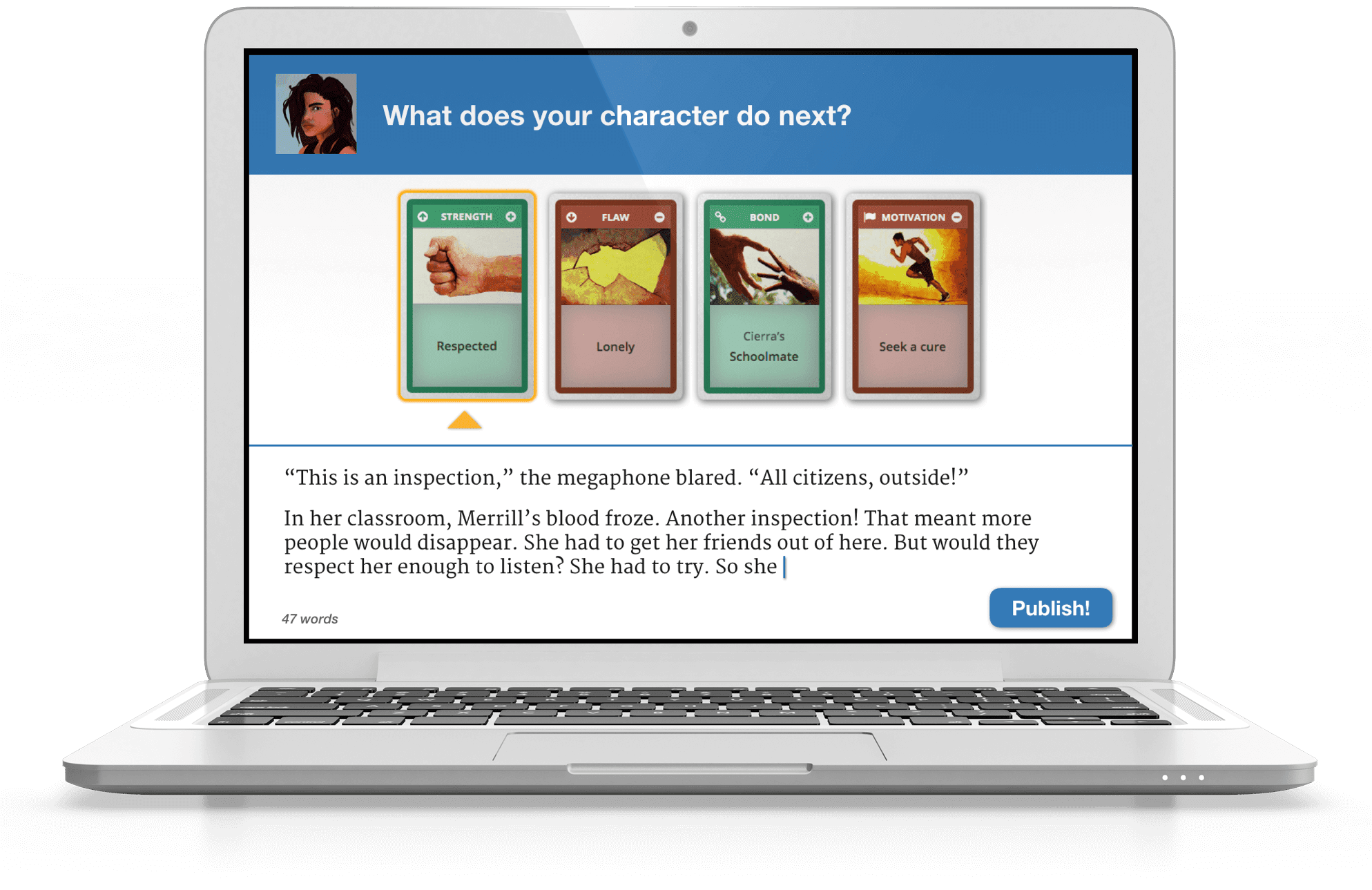
StoriumEDU is a collaborative writing game designed to help young writers build their confidence and skill. Inspired by Storium.com, it can be played either in class or at home and is designed for safety and privacy.
- Frequently Asked Questions (FAQs)
- Terms and Conditions
- British Council Global
- Accessibility
© 2024 British Council
- Mini English Lessons
5 Enjoyable English Writing Games That Turn Practise Into Playtime

Step into a world of fun while improving your English writing skills. Fun writing games let you practise and learn at your own pace, making studying an enjoyable experience. In this article, discover 5 English writing games that are suitable for all learning levels, so you can improve your English writing skills while having a blast !
How games can help you learn English
Games for learning English are a fun and effective way to improve your language skills. English creative writing games can help learners like you explore different writing styles and experiment with language, ultimately helping to build your confidence.
Games are a great way to help you remember what you learn in English. They are enjoyable, and when you have fun, it’s easier to remember things for a long time.
Game #1: Story Starters
Story Starters is an English creative writing game that works best with a group of players. This game involves taking turns to write a story with each player adding a sentence within a set time limit.
How to play
To play Story Starters, gather a group of friends, some paper, pens, and a timer.
You will start with a pre-written sentence (if you Google “Story Starter sentences” you can find plenty). You must add a sentence to this story within 2 minutes set on the timer. Once you have written your sentence, pass the paper to the next person and let them repeat the process by adding a new sentence of their own.
This is a great game for letting your imagination run wild and getting your creative juices flowing !
Game #2: Scategories
Scategories is a quick and creative game where you think of words that start with a given letter and that fit into specific categories to earn points for answers that are unique.
A group of players is given a list of prompts such as “things babies need”. Then, a letter from the alphabet is picked at random (using a lettered die or an online letter generator). Once the letter has been chosen, the timer is set, and each player must quickly come up with a word starting with the chosen letter to answer each of the prompts.
To make things a bit trickier, you only get a point for your answer if nobody else has put the same answer. Playing this game challenges you to think fast to find the most creative and unique answers.
Game #3: Picture Prompts
Picture Prompts is a fun writing game that involves using pictures to create imaginative stories or descriptions. This game can be played by yourself or with a group of people.
Each player is given a picture or an image. Next, a timer is set for a specific amount of time – 5 to 10 minutes usually works well. The players must then write a creative story or description based on their picture. The goal is to be as imaginative as possible. Once the time is up, players take turns reading their descriptions or stories to the rest of the group.
Game #4: Consequences
In the game of Consequences, players take turns writing words or phrases on a piece of paper, then hiding what they have written to collaboratively create a funny and often silly story.
Each player takes a turn writing a word or phrase on a piece of paper, then folding the paper after each turn to hide what they’ve written. Then, it’s passed on to the next player, who adds their part before folding the paper and passing it on again. This continues until all players have contributed. Finally, unfold the paper and read out the funny story you created together.
Game #5: Rewrite The Ending
In this English writing game, players are encouraged to choose a favourite film or book and then rewrite the ending.
Rewrite The Ending is a game that does what it says on the tin . Quite simply, you get to rewrite the ending of your favourite book or film. You can change the story, add new characters, or create exciting twists. It’s a creative way to practise writing and using your imagination while having fun with stories that are already familiar to you.
Ready to take your English writing skills to the next level?
While games offer a fun and interactive way to practise and improve your writing skills, combining them with structured learning is even more powerful.
If you’re serious about mastering English, check out our English Online courses. Choose between group classes or private, one-to-one tutoring and experience expert-led learning and personalised guidance to help you perfect your English writing skills in no time at all.
Explore English Online >
Leave a comment Cancel reply
Your email address will not be published. Required fields are marked *
Related Posts

- Social English
What to Write in a Birthday Card: Crafting Memorable Messages for Your Loved Ones
Explore examples of different types of birthday messages to help you create the perfect wishes for friends, family, and acquaintances. Advertisement Advertisement The power […]

How to Write a Review That Stands Out: A Guide for English Learners
Writing an online review is a powerful way to share your experiences and help others make informed decisions. This guide will help you understand […]

Exploring and Understanding British Humour: A Guide for English Learners
British humour is renowned worldwide for its wit, cleverness, and unique charm. With National Joke Day approaching on August 16th, there’s no better time […]
Get Exclusive access to offers and promotions
Enter your email address below to join the english online mailing list..
Personal details will be held by the British Council and will only be used in relation to your request. Please read our terms of use for more information.
Writing Games: Engaging Activities to Boost Creativity
By: Author Paul Jenkins
Posted on October 17, 2023
Categories Creativity , Entertainment , Inspiration , Writing
Writing games are an excellent way to improve and hone your writing skills while having fun at the same time. These games not only enhance your creativity but also help in developing a strong foundation in grammar, punctuation, and storytelling.
From classroom activities to online platforms, there’s a wide variety of writing games available for learners of all ages and expertise levels.

Educational writing games provide an engaging and interactive approach to teaching language skills, making the learning process enjoyable for both students and teachers.
These games often focus on key aspects of writing, such as sentence structure, word choice, and narrative development, adapting to the needs of each individual learner.
Story and letter writing games, in particular, provide a structured yet creative environment for aspiring writers to put their thoughts into words and channel their inner storyteller.
Key Takeaways
- Writing games help improve writing skills in a fun and interactive way
- Educational writing games focus on grammar, punctuation, and storytelling
- A variety of games are available online and in classrooms to suit different skill levels and learning styles
Fun Writing Games

Adjective Games
One fun and engaging way to strengthen your writing skills is through adjective games . These activities help you expand your vocabulary and make your sentences more descriptive. For example, try “Adjective Showdown,” where you take turns with a partner, picking a noun and brainstorming as many adjectives as possible to describe it.
Another game is “Adjective Charades,” where players take turns acting out adjectives, while others try to guess the word.
To make your writing more dynamic and action-packed, try practicing with verb games . “Verb Relay” is an entertaining option where you form two teams and race to list verbs that fit a given category, like “things you do in the kitchen.”
Another game, “Verb Tenses Race,” challenges you to write sentences in different tenses, like past, present, and future, for a selected verb. These games not only enhance your use of verbs but also improve your understanding of grammar rules.
Pictionary Games
Pictionary games are not just fun, but also great for developing your writing skills. Combining drawing and writing, these activities encourage creativity and boost your ability to visualize ideas. One example is “Illustrated Stories,” where you draw a simple doodle or picture, and then write a story inspired by your drawing.
Another option is playing a traditional game of Pictionary focused on literary themes, like characters, settings, or objects from famous books. By transforming your ideas into visual representations, you’ll unlock new perspectives and improve your ability to craft engaging stories.
Educational Writing Games
Noun games are a fun way for children to practice their writing skills while learning about the basic building blocks of sentences.
One great example is the Nouns and Verbs Sort Game , where players categorize words into the correct column. This activity works well in homeschool settings and helps children identify nouns easily. Another interesting option is the “Name It” game, in which the child looks at pictures and writes down the nouns they represent.
Pronoun Games
Teaching pronouns can be engaging and enjoyable with creative games. Your child can practice replacing noun phrases with appropriate pronouns by playing the “Pronoun Swap” game. In this activity, you provide sentences with underlined nouns, and your child replaces them with the correct pronoun, such as he, she, it, or they.
For an online experience, ABCya is an excellent resource for writing games, including those that serve as pronoun exercises.
Grammar Games
Grammar games incorporate various aspects of writing, such as punctuation, capitalization, and conjugation.
Fun Factory is a great example you can use, where children practice adding the correct punctuation or capitalization to sentences. To work on verb tense, try the “Tense Transformation” game, in which sentences are provided in one verb tense, and your child must rewrite them into another tense.
These games are a valuable addition to your homeschool writing curriculum, providing an exciting way for kids to learn and practice grammar.
Story and Letter Writing Games
Storybuilding Games
Engaging in story writing can be a great way to spark creativity and improve literacy skills. To make it fun and interactive, try playing some storybuilding games with your students or kids.
One cool example is Storymaker from ABCya, where young learners can create their own unique tales using a variety of characters, objects, and backgrounds.
Another entertaining game is sentence stretching. This game encourages players to expand short, simple sentences into more detailed and descriptive ones. Simply start with a basic sentence and take turns adding adjectives, adverbs, or other words to make it more interesting.
Letter Composition Games
Letter writing is an essential skill to master, and it can be just as enjoyable as crafting stories.
To liven up the learning process, check out Write a Letter to Santa from ABCya, catered to children in kindergarten to grade 3. This interactive game guides youngsters through the process of composing a letter while covering vital aspects such as addressing, greeting, body, closing, and signatures.
Another fun letter composition game is “Grammar Toss – Sentence Making.” In this activity, players toss a ball or beanbag to each other while they construct sentences. Each person must include a correct grammar element, such as a noun, verb, or punctuation mark. As the players continue tossing the ball, they work together to form a coherent sentence that incorporates the various grammar components.
By incorporating these games into your teaching or parenting approach, you’ll make story and letter writing more enjoyable and engaging. So go ahead, give these games a try, and watch as your young ones become more confident and proficient in their writing skills!
Creative Writing Games
Space-themed Writing
Unleash your inner astronaut and delve into the world of space-themed creative writing games! By focusing on this exciting topic, you can explore endless possibilities and fuel your imagination. Try crafting short stories about intergalactic adventures, alien encounters, or futuristic space technology.
You can even engage in a group activity where each person writes a paragraph, building a collaborative cosmic tale. Remember, there are no limits to where your creativity can take you – all you need to do is let your mind wander through the vast universe.
Character Interview Games
Developing intriguing characters is crucial for successful creative writing, and character interview games are your fun ticket to achieving that.
These games challenge you to think deeply about your character’s traits, backstory, and motives, through a series of interview-style questions. Start by creating a list of questions that your character might be asked, focusing on their personality, life experiences, and relationships.
Then, answer these questions as if you were the character, ensuring to write in a friendly, conversational tone. You’ll be surprised how these insightful answers deepen your connection with your character and enhance your overall writing. So go ahead, and enjoy the journey of getting to know your characters better through these entertaining exercises.
Writing Games for Journalists
As a journalist, it’s essential to keep your writing skills sharp and engaging. Writing games can be a fun and interactive way to enhance your abilities. In this section, we will discuss two types of writing games specifically tailored for journalists: Article Drafting Games and Headline Creation Games.
Article Drafting Games
Article drafting games are designed to help you practice crafting well-written and engaging newspaper articles. One idea is to create a communal story, where you and your fellow journalists take turns adding sentences or paragraphs to a shared document. This can be a great way to collaborate on a story and see how different writing styles blend together.
Another useful game involves focusing on the details. Pick a specific event or topic and challenge yourself to write a news article filled with vivid and accurate descriptions. Be sure to include quotes from relevant sources and present the information in a clear, concise manner.
You can also try rewriting the endings of existing articles. Find a newspaper article whose conclusion doesn’t satisfy you and rewrite it in a way that you find more compelling. This will help you practice creating strong, impactful endings for your stories.
Headline Creation Games
Crafting attention-grabbing headlines is a key skill for journalists. One simple game to improve your headline writing skills is to pick a random newspaper article and brainstorm at least five alternative headlines for it. Try to create headlines with varying tones (serious, humorous, or informative) to practice adapting your style to different situations.
Another game is called “Headline Roulette.”
Gather a group of fellow journalists and give each person a stack of cards with intriguing single words written on them. Then, challenge everyone to create a unique headline using the words they’ve received. This exercise is fun and encourages creativity in crafting engaging headlines.
By participating in these writing games, you can hone your journalism skills and ensure that your newspaper articles are always well-written, engaging, and informative. Have fun, and remember that practice makes perfect!
Fun Writing Activities
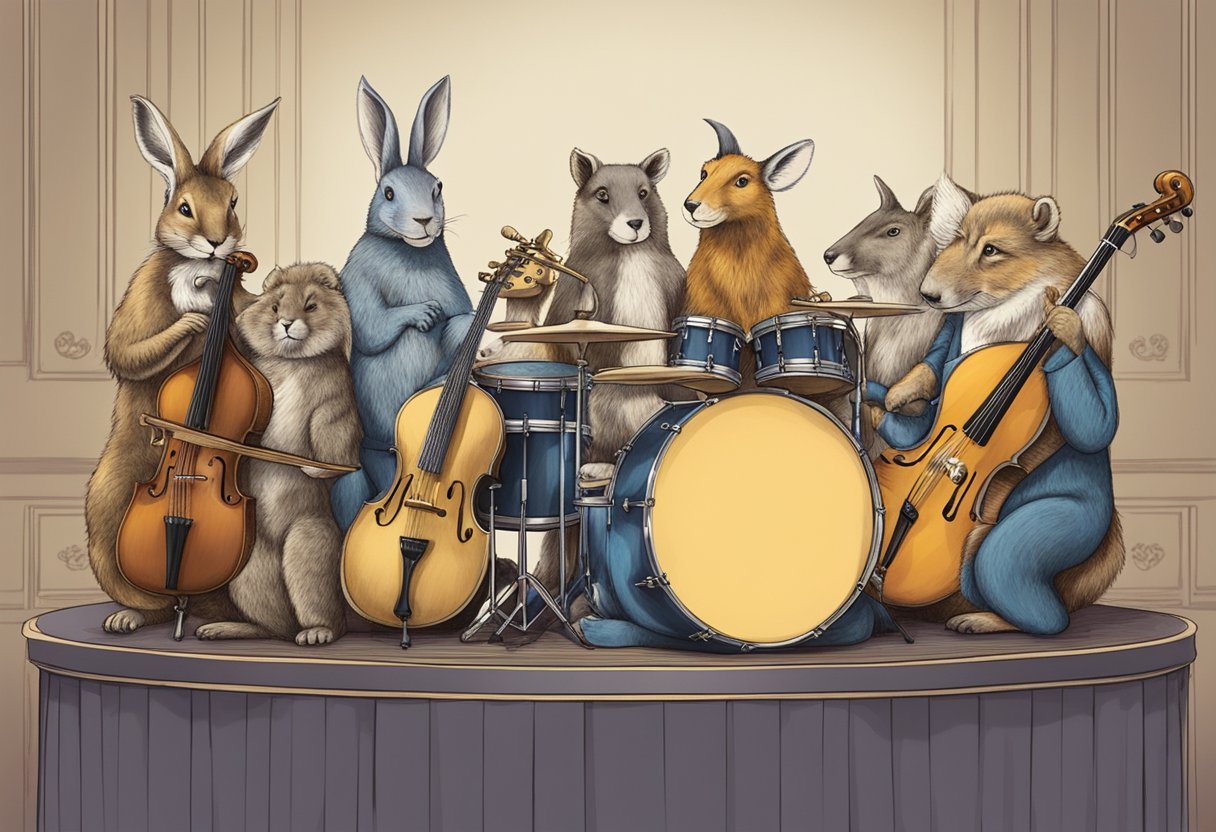
One exciting method is to participate in creative writing exercises that challenge you to think outside the box, whether you’re writing alone or with a group.
Examples of these exercises include writing prompts or activities that focus on specific writing skills. Giving your imagination free rein will undoubtedly make the writing experience more enjoyable.
Another way to spark your creativity is by creating an Island Story Map. Begin by marking a starting point with a star and an endpoint with a red cross. Then, fill the map with obstacles, challenges, and interesting events for your characters to overcome. This approach allows you to visually explore and engage with your story world, making the writing process more exciting.
Don’t forget writing games that can entertain while improving your literacy skills. These games can be simple to play and easily adapted to suit different age levels. Whether it’s using random words to create a story or starting a sentence that your friends must finish, writing games help you think on your feet and keep your creative mind engaged.
Classroom Applications

As a teacher, you can incorporate various writing games into your classroom to make the learning process more engaging and fun. Writing games are versatile and can be utilized in almost any subject or course.
By integrating these enjoyable activities into your teaching strategy, you are not only making the learning process enjoyable but also helping your students develop their writing skills in a playful manner.
One fantastic tool to check out is BookWidgets , which allows you to create different types of interactive activities and assessments that can be easily assigned to your Google Classroom. This platform brings the convenience of creating and managing all your interactive activities in one place.
A fantastic app to improve your students’ writing skills is the Writing Challenge App . This app is designed as an interactive game that provides prompts to get the students started, and as they write, it supplies new prompts to add ideas, characters, and actions to the plot.
Incorporating this app in your classroom will encourage students to explore their creativity and improve their ability to generate unique ideas.
Another highly recommended app is Story Builder , designed to help students with paragraph formation, integration of ideas, and abstract thinking. It uses audio clips to promote access to writing, making it an engaging tool in the classroom.
Advanced Writing Games

Adverbial Phrase Games
Friendly competition among peers can make learning grammar more enjoyable, and advanced writing games that focus on adverbial phrases are no exception. Here are some interesting and creative games to challenge your writing skills and deepen your understanding of adverbial phrases:
- Adverbial Phrase Challenge : Select an action verb, and then come up with as many appropriate adverbial phrases as you can to modify that verb in a sentence. For example, if “run” is the chosen verb, you could create phrases like “run quickly,” “run gracefully,” or “run at full speed.” Share your ideas with your peers and see who comes up with the most unique and creative combinations. Using a timer can add an extra challenge!
- Adverbial Phrase Stories : Engage in creative writing by starting with a simple sentence, then expand it with adverbial phrases to create a vivid scene. For instance, the sentence “The cat jumped” can become “The cat jumped agilely onto the rusty fence in the moonlight.” You can collaborate with others and build a coherent story by taking turns adding adverbial phrases to each sentence.
- Adverbial Phrase Showdown : Have two players face off in a head-to-head battle where one player must use adverbial phrases to enhance a given sentence, while the other must spot and explain why each adverbial phrase is effective. This game helps both players improve their understanding of adverbial phrases and their potential impact on a sentence’s meaning.
Remember, adverbial phrases add depth and excitement to your writing, making your story or essay more engaging. By incorporating these games into your practice, you’ll not only have fun but also improve your writing skills in no time.
Fundamentals of Writing Games
You might be wondering how to step into the world of writing games. Well, we’re here to help! In this section, we’ll cover the main fundamentals of game writing to give you a strong foundation.
First, let’s talk about your writing skills. It’s important to have solid writing abilities when tackling game narratives. You need to create compelling stories, characters, and dialogues that engage players. Remember, practice makes perfect, so honing your craft by writing daily can make a big difference.
Now, let’s dive into the world of game writing. It is unique from other forms of writing, as you need to integrate the story into the interactive and dynamic nature of video games. A game writer must keep in mind the player’s choices and the non-linear story structure and plan multiple narrative paths accordingly.
With resources like Video Game Writing Essentials available online, getting started shouldn’t be a problem.
When writing for games, you must consider the game’s mechanics and design. This means understanding how gameplay elements, challenges, and environment fit into the story. Collaborating with game designers will help seamlessly weave the story into the gameplay.
During the game development process, it’s essential to be flexible and open to adaptation. Game writing involves a lot of iterations and refining. As the game design evolves, your story may need to change as well. Listen to feedback, stay receptive, and be a team player to create a captivating game.
Tips and Guides

First off, always familiarize yourself with the basics of game writing. You can find inspiration and great examples by looking at the instruction manuals of some of your favorite games. Analyze how they format instructions and take note of any elements you particularly enjoy.
When starting your project, make sure to have a solid plan for your story and characters. A practical guide to game writing can be a valuable resource to help you get started on the right foot. This guide will give you insights into collaborating with design, production, and writing staff during the pre-production and production phases of your game.
Don’t be afraid to experiment with various writing techniques. Sometimes, incorporating things like sentence stretching, rebus writing, or touch-and-tell activities can add excitement and engagement for your players.
To explore more writing games, check out this list of 10 quick and fun writing games to improve students’ literacy skills, which you can adapt to fit your game concept.
Finally, always keep your audience in mind. Write for your target audience and tailor your game to their interests, preferences, and skill levels. Remember, your goal is to create an enjoyable and memorable experience for your players.
Frequently Asked Questions
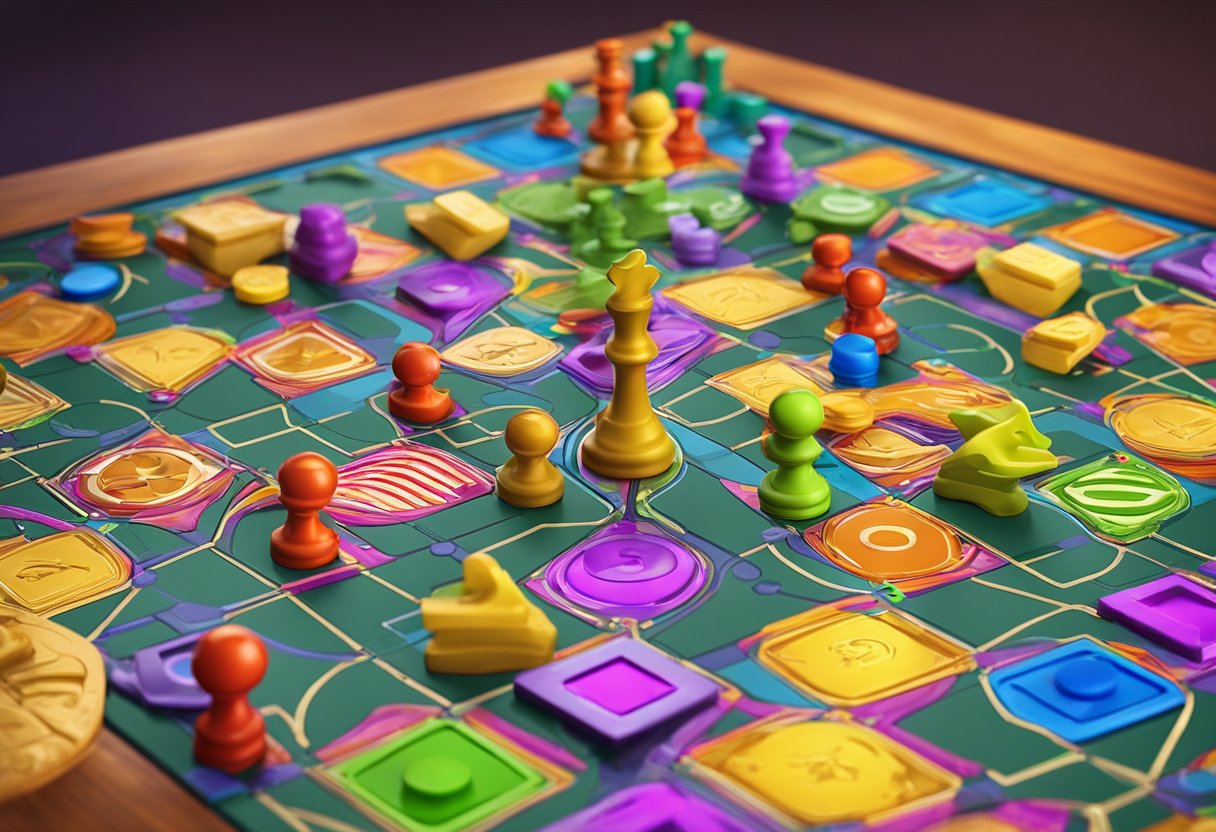
What are some good writing games for kids?
There are plenty of enjoyable writing games available for children. Some popular options include Five-Word Story, where kids use prompts to create brief stories like these , and Poetry Strips or Word Banks, in which children get inspired by pre-selected words or create word banks themselves. Experiment with different games to find the ones your child enjoys the most!
How can one play writing games with friends?
To play writing games with friends, choose activities that involve collaboration and group participation. One example is Secret Pictionary, where players write a random phrase, pass it along, and the next player attempts to draw it. You can also try Word Association games where friends take turns writing words related to a common theme.
Which writing games help improve skills?
Many writing games can improve various aspects of writing, such as vocabulary, grammar, creativity, and storytelling. Engaging in different writing activities like using themed word banks, creating poetry, or in-depth stories can help children develop and enhance their skills. Keep an eye out for games that target specific areas your child needs to improve.
Which games are suitable for middle school students?
Middle school students can benefit from writing games that encourage creativity, teamwork, and critical thinking. Options like group storywriting, where each participant contributes a sentence or paragraph to form a coherent narrative, can be both engaging and educational. Other activities like collaborative poetry, writing dialogues, and adapting stories into scripts can also be suitable for middle school students.
What are fun writing activities for 4th and 5th graders?
Fun writing activities for 4th and 5th graders can include creative storytelling games, where they use prompts or images as inspiration; poetry creation with various forms like haiku or limericks; and word games that involve making sentences using specific letter combinations. Always encourage them to use their imagination and creativity, as well as focusing on proper grammar and punctuation.
Can you recommend writing games for toddlers?
While writing games might be too advanced for toddlers, you can introduce activities that help develop fine motor skills and a love for storytelling. Encourage them to draw simple pictures depicting stories, dictate stories to you, or engage with letters and numbers through play. As they grow older, you can gradually introduce more complex writing activities.

FREE - Available Online Anytime, Anywhere

Four Writing Lessons
Persuasive Letter
Sensory Description
Report The News
Write A Scary Story
MISSION: Helping ALL children write quality compositions before leaving 5th grade
PERSUASIVE – available now
TV game show— Best Persuasive Letter. Students apply 5 keys to persuasion in a letter they write urging parents to buy a puppy. Convincing letters win play time with a virtual puppy.

DESCRIPTIVE – available now
Students choose vivid sensory words and similes supporting a main impression as they build a blog post about an exciting day with some friends at the beach.

INFORMATIVE – Fall 2018
Students play the role of news reporters for their school website, covering a topic of interest to children. They present the facts and arguments in the strongest order.

NARRATIVE – in development
A haunted house is just the place for a scary SETTING, twisty CHARACTERS, an event TRIGGERING a PLOT rising to a CLIMAX and a credible RESOLUTION.
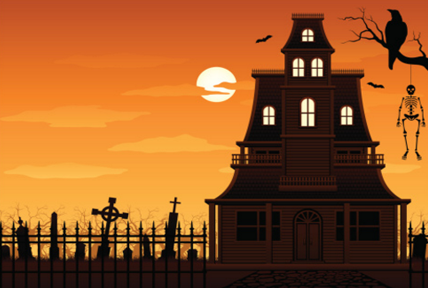
PERSUASIVE WRITING

Interactive Learning Game
Video preview.

Persuasive Writing
Teacher guide.
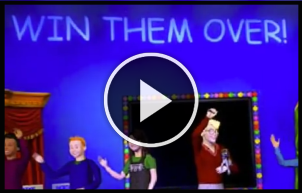
“Win Them Over!”
DESCRIPTIVE WRITING
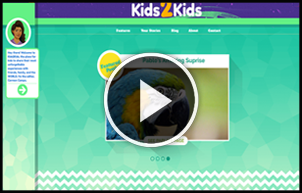
Descriptive Writing Game

Descriptive Writing

“Sharing Personal Experiences”
Full interactive game, personalized learning.
Teachers can shift time from whole-class instruction to personalized learning. • While some students are occupied with learning games, the teacher can coach small groups or individuals. • Grade 2-3 lessons are available for Grade 4-5 students who are working at lower grade levels.
Saves Teacher Time
Teacher time is saved in planning, instruction, and evaluation.
♦ Detailed lesson plans include learning outcomes and step-by-step strategies. ♦ The basic concepts of each composition lesson provide templates for additional lessons on the same genre. ♦ Games are self-scoring. ♦ Checklists and “how to” videos enable students to revise and edit their own compositions.
Teacher Support Materials
Teachers may draw upon a rich array of learning materials, including mini-lessons, graphic organizers, and short video tutorials.
Teacher guide: Persuasive Writing
Teacher guide: Descriptive Writing
User-Tested
Information coming soon, pending results of classroom tests.
Program Highlights
Common core alignment.

Game-Based Learning
The eWriting for Kids! program is in the vanguard of a new era deploying game-based lessons to help teachers deliver highly engaging interactive writing lessons within the actual time available, and provide online lessons anytime, anywhere.
Lesson Design
Grades 2 - 3 lessons, support this non-profit organization by funding additional interactive learning games., what people are saying. . ..
Read real reviews and comments about eWriting For Kids!
This is an AMAZING Game! I love it (Win Them Over!) and so do the children I have tried it with. Stephen R. - United Kingdom
A fun 3D game (Win Them Over!) used to teach writing. The game is engaging and innovative. Strengths: Innovative, teaches writing (which is rare to find) Free, Instructor Resource/Support provided. Self-paced, can be used in formal and informal settings. I think it is great that while everyone is developing STEM teaching games, this game realizes the importance of writing. I have seen a decline in writing skills among students and I feel this game is a great way to tackle issues such as poor communication skills in our youth. Judge feedback, SIIA CODiE Awards 2017
The value is nearly immeasurable. I had a more than a few kids come up and say either ``Hey, that was (writing) actually fun!`` or ``I like writing when I can write about what I want.`` The best feature was allowing the children to discover their strengths and weaknesses regarding Descriptive Writing. It improves grammar, reading skills, and of course allows the kids to further expand on their imagination and creativity. * Comments after 16 Girls and Boys Tested ``Sharing Personal Experiences``. Sean W. - Youth Development Professional Boys and Girls Club
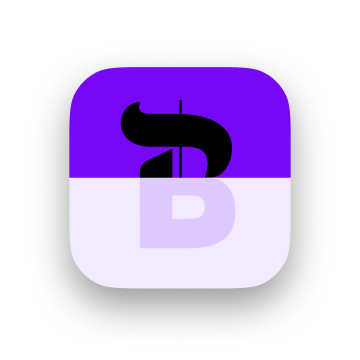
A collaborative creative writing app where stories are built line by line.
Contribute to multiplayer stories, seeing only what the previous author wrote. modeled on the game exquisite corpse, each creation is gloriously unique still curious learn more..
Already have an account? Sign in!
Recently finished stories
Stories in need of a line, what is byline.
A multiplayer creative writing experience where a group of authors creates a story, one line at a time.
How does it work?
Loosely based on exquisite corpse, each author writes a line having only seen the line directly before theirs. Once complete, the creator titles the story and shares it with the group.
Is this a game?
Yes! Get started by creating a story and sharing it with friends. Don't know any writers? No problem. Post your story to Byline and you'll meet some!
Who does the writing?
Public stories, private stories.
If you invite individual people (by username, email, or phone number) and make sure Plus others on Byline is deselected then your story becomes private and only those invited can contribute.
What's a breadcrumb?
Breadcrumbs give authors an opportunity to select a key word/phrase from their line that they think is important. Breadcrumbs are visible for the life a the story and can act as clues that offer additional context.
They are optional, but fun to add!
What's a sequel?
Sequels are stories spawned from the last line of other stories. To create a sequel go to the bottom of a finished story and select Write More → Create sequel based on this story .
What if I see something offensive?
If you see something that doesn't live up to our standards report it by clicking the next to any line.
Looking for help?
Play writing games
Fight writers block and develop your writing skills with our hand crafted games specifically made to get you feeling creative.
By signing up you agree to our privacy policy and terms of service .

Beat writers block
Our writing games are made to encourage creativity; with quick ten minute writing challenges that will give you the inspiration, and encouragement, you need to write larger projects.
Develop your writing skills
Each game is tailored to different elements of writing; from characterisation to story development. This allows you to focus on areas you may be struggling with.
Make writing fun
Most importantly writing should always be fun. These games are a safe space for you too enjoy doing what you love, without taking things too seriously. Your game entries can be as silly and imaginative as you’d like!
Our writing games - and we’re adding more all the time.
Our games have been developed in real-life writing workshops. The Orton team is always interested in hearing new game ideas from our users so please get in touch.
Writer's block
Flash fiction, write something in 10 minutes. You just have 1 word to get you started.
Write something in 10 minutes based around a single photo.
Characterisation
Character act
Improve your character. We'll provide a situation, and you have 10 minutes to write your character's reaction.
No backspace
Challenge yourself to write something without being able to delete a single letter.

Create an account to host your own game
The Online Writing Game - Write Fiction With Friends
Two game modes, free to play.
- GET STARTED
- ENTER CLASS CODE
Gamify creative writing.
Storiumedu is a collaborative writing game for youth that builds skill and lasting confidence., start transforming your students into motivated writers., virtual playing cards unlock creativity..
Gameplay revolves around digital “story cards” that represent different aspects of storytelling and character development. Along with vivid art , these cards serve as writing prompts, helping students figure out what to write next at each step of the game and overcoming the dreaded “writer‘s block.”
Characters give students a personal stake.
Each student creates and controls their own unique character . This helps them care about the story that they’re writing and builds strong, lasting motivation and engagement. Characters grow and evolve as the students play and write, just like in a real story.
Students write amazing original stories, together.
Students take turns playing story cards and adding to the story. Paragraph by paragraph, they collaboratively write their own original story simply by playing the game. StoriumEDU’s simple rules motivate even the most reluctant young writers and keep the story moving forward.
Supercharged tools help you encourage young writers.
StoriumEDU tracks your students’ writing speed and progress, giving you insights both into who is excelling and who needs additional attention. Teachers can monitor all student writing, provide feedback, and request revisions.
Endless stories, endless educational uses.
StoriumEDU is a ”Swiss army knife” that supports an impressively wide range of educational goals. You can use story cards and curricular content from our growing library , created by teachers just like you. You can also easily create your own cards to support your own unique classroom needs.
Start your free trial and unlock your students’ creativity.
of teachers say StoriumEDU noticeably improves student motivation.
of teachers would recommend StoriumEDU to a colleague.
of students say StoriumEDU is more fun than traditional writing assignments.
160 million
words already written, just by playing a game!
Testimonials
“The National Writing Project is enthusiastic about StoriumEDU‘s potential for educational impact and the importance of its underlying innovation in improving the state of writing instruction.”
“StoriumEDU empowers teachers to craft rich, creative, rewarding experiences for their students that help them find their unique writing voice. It made my school year!”
“I would recommend StoriumEDU to any creative-minded teacher interested in engaging students in storytelling and collaborative writing. It's an excellent platform to help students creatively explore any number of writing skills.”
“StoriumEDU is unlike any other writing product I have seen. It offers students unique opportunities for learning, fun, and self-discovery, in a way that is manageable, assessable, and enjoyable for teachers to implement.”
Billed annually, or $15 if month-to-month.
Regular price: $10/mo billed annually, or $15/mo if billed month-to-month. Offer expires 9/30.
- Unlimited play, for every student you teach.
- Easy classroom rostering
- Create and share original storyworlds
- Analyze student writing via our analytics dashboard
Ask us for a quote!
- Multiple teachers and classrooms
- Google Classroom integration
- School/district analytics
- Discount volume pricing
- Keep your kids creatively active and socially engaged at home
- Play with siblings and friends over the Internet
Designed and tested with students of all ages. Appropriate for late elementary, junior high, and high school students.
Requirements
Web-based, with nothing to install! Works on Chromebooks, laptops, desktops, tablets, and smartphones.
Designed for COPPA and FERPA. No personal student information collected or shared. The teacher is always in control.
Want to know more?
Download our brochure
Read the detailed FAQ
Meet our team
Team | Blog | Press | Contact us
© Copyright 2022 Protagonist Labs, Inc.
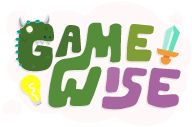
Writing Games & Interactive Lessons
Writing tools students love.
Engage and inspire your students with these immersive writing prompts! Perfect as a short story writing starter, these dynamic tools will give students all the characters, settings, and problems they need to get their ideas on to paper.
If you’re sick of hearing students say: “I don’t know how to start!” or “I don’t like that writing prompt!” – you’ve come to the right place! Each generator has than 10 million plot combinations, and students love getting to customise their prompt.

Our Writing Resources
- ELA Test Prep 16
- Elements of a Story 4
- Persuasive Language 7
- Poetic Language 6
- Shakespeare 1
No products were found matching your selection.
Showing all 5 results

Indirect vs Direct Characterization

Christmas Creative Writing Prompt

Western Writing Prompt

Fairytale Writing Prompt

Fantasy Creative Writing Prompt
Recent posts.

How to make your students better writers with indirect characterization

An Escape Room Full of Spooky Secrets
Have fun this Halloween with an interactive escape room mystery based around INFERENCE!
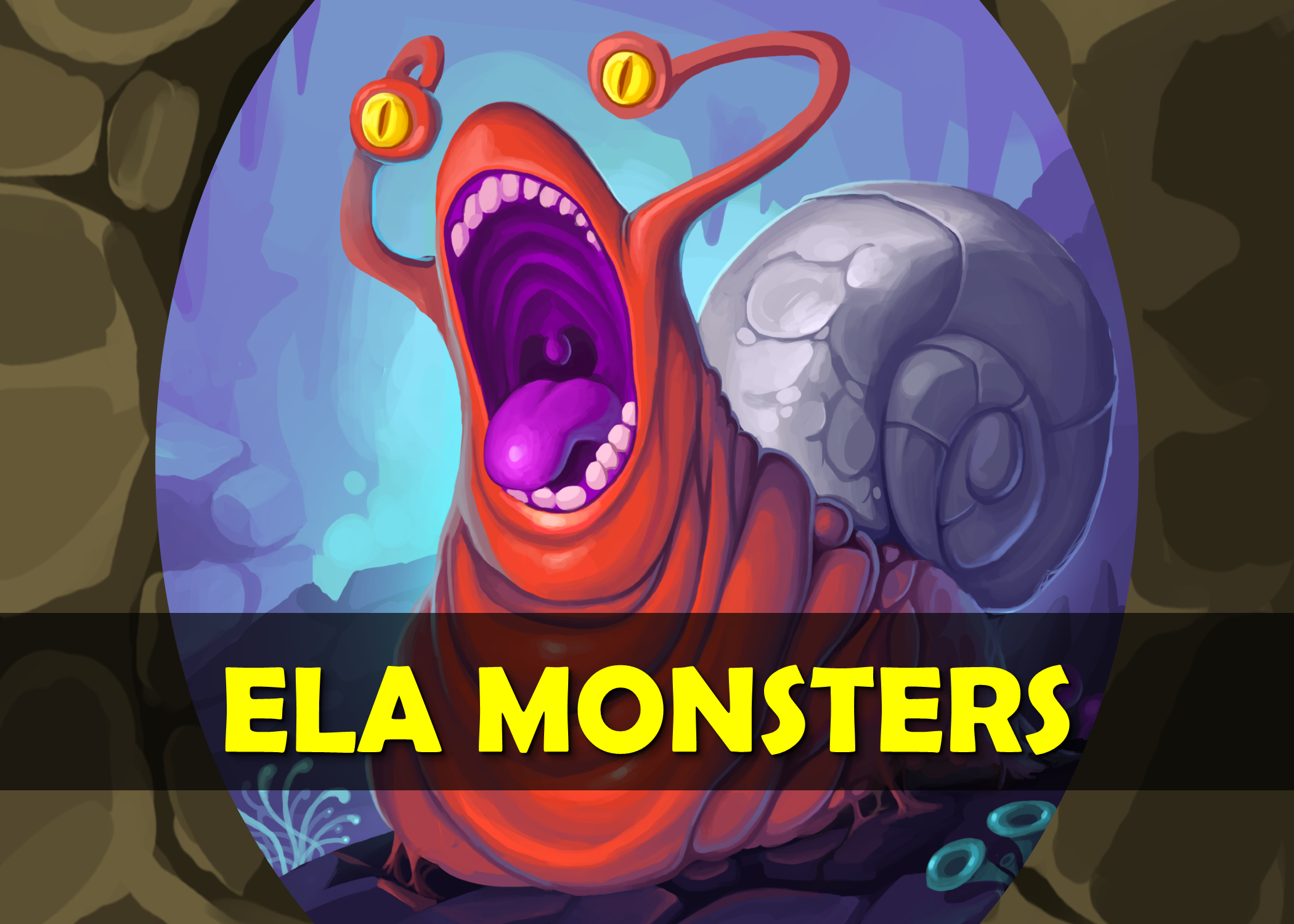
Teach Figurative Language by Fighting Monsters with Boom Cards

How to use Choice to Unlock Your Student’s Imagination
How you can use choice to instantly wake up your students and unlock their imagination • GameWise
Free tools to make your students better writers and readers .
Quill.org, a non-profit, provides free literacy activities that build reading comprehension, writing, and language skills for elementary, middle, and high school students.
Writing Across the Curriculum: Quill's nonprofit mission is to now build both reading and writing skills through free, OER content across the curriculum. Over the coming years, we will be building a library of free ELA, social studies, and science activities that engage students in deeper thinking through writing prompts that provide immediate feedback.
9.4 million students have written 2 billion sentences on Quill.

Quill Reading for Evidence
Provide your students with nonfiction texts paired with AI-powered writing prompts, instead of multiple-choice questions, to enable deeper thinking.
Students read a nonfiction text and build their comprehension through writing prompts, supporting a series of claims with evidence sourced from the text. Quill challenges students to write responses that are precise, logical, and based on textual evidence, with Quill coaching the student through custom, targeted feedback on each revision so that students strengthen their reading comprehension and hone their writing skills.
Video not supported
Culture & Society Topics

"Should Schools Have Grade Requirements for Student Athletes?"
Science Topics

"How Does Eating Meat Impact Global Warming?"
Social Studies Topics

World History
Quill Connect
Help your students advance from fragmented and run-on sentences to complex and well structured ones.
Using the evidence-based strategy of sentence combining, students combine multiple ideas into a single sentence. They then receive instant feedback designed to help them improve their clarity and precision.
Quill Lessons
The Quill Lessons tool enables teachers to lead whole-class and small-group writing instruction.
Teachers control interactive slides that contain writing prompts, and the entire class responds to each prompt. Each Quill Lessons activity provides a lesson plan, writing prompts, discussion topics, and a follow up independent practice activity.
Quill Diagnostic
Quickly determine which skills your students need to work on with our diagnostics.
The diagnostics cover vital sentence construction skills and generate personalized learning plans based on the student’s performance.

Quill Proofreader
Proofreader teaches your students editing skills by having them proofread passages.
Students edit passages and receive personalized exercises based on their results. With over 100 expository passages, Proofreader gives students the practice they need to spot common grammatical errors.
Quill Grammar
Students practice basic grammar skills, from comma placement to parallel structure.
Quill Grammar has over 150 sentence writing activities to help your students. Our activities are designed to be completed in 10 minutes so you have the freedom to use them in the way that works best for your classroom.
How Quill Works
Set up your classroom, without it.
You can quickly and easily set up your classroom in Quill by inputting student names or providing students with a unique code. If you use Google Classroom or Clever, you can automatically set up your classroom with one click.
Choose activities
Decide if you want your students to proofread passages, combine sentences, or complete a diagnostic. Use our ten minute activities as building blocks during your classroom instruction.
Use easy-to-consume reporting
Use our reporting to spot trends and identify growth opportunities. Monitor comprehension on specific writing standards.
Get immediate feedback for your students
Save time grading and watch your students correct their mistakes instantly.
Intervene where students struggle
See exactly where your students need intervention with our comprehensive reports.
Differentiate learning to meet the needs of all students
Assign specific activities for ELLs and students with learning differences.
Engage students with adaptive activities
Challenge students with questions that automatically adapt based on their previous responses.
Align with the Common Core Standards
Easily meet Common Core language standards with our aligned activities.
Easily sign up with Google Classroom
With one click all of your students and classes will be imported.
Over 100 concepts totaling 50 hours of quality curriculum.
Teacher stories
Quill in the classroom.
ROXANNA BUTKUS, RANGEVIEW ELEMENTARY
SARA ANGEL, KIPP LA
COLETTE KANG, EAST BAY INNOVATION ACADEMY
DANIEL SCIBIENSKI, PRINCETON PUBLIC SCHOOLS
3rd Grade ELA
5th Grade ELA
6th Grade ELA
8th Grade ELA & ELL
Join over 2,000 schools using Quill to advance student writing.

Quill Premium
Quill Premium's advanced reporting features are the best way to support teachers at the school or district level.


Writing Games for Kids
Explore our interactive writing games for kids! Our experienced language arts teachers have designed fun writing games to boost early writing skills and also improve kids' handwriting. This collection covers various writing activities like tracing uppercase and lowercase letters of the alphabet and wri ... Read more ting high-frequency words or sight words. Parents and teachers love these writing games as they guide kids from letter tracing to writing fluency! Start now for free!

CONTENT TYPE
- Lesson Plans
- Math (2,046)
- Number Sense (381)
- Number Recognition (30)
- Number Recognition Within 5 (12)
- Number Recognition Within 10 (12)
- Number Recognition Within 20 (6)
- Number Tracing (20)
- Number Tracing Within 5 (5)
- Number Tracing Within 10 (5)
- Number Tracing Within 20 (10)
- Number Sequence (56)
- Counting (141)
- Counting Objects Within 5 (47)
- Counting Objects Within 10 (43)
- Counting Objects Within 20 (6)
- Compare Numbers (47)
- Compare Objects (7)
- Compare Numbers Using Place Value (5)
- Compare 2-Digit Numbers (6)
- Compare 3-Digit Numbers (10)
- Order Numbers (15)
- Skip Counting (36)
- Skip Count By 2 (8)
- Skip Count By 5 (8)
- Skip Count By 10 (13)
- Skip Count By 100 (3)
- Even And Odd Numbers (3)
- Place Value (78)
- Teen Numbers (4)
- Word Form (5)
- Expanded And Standard Form (14)
- Unit Form (4)
- Round Numbers (16)
- Round Numbers To The Nearest 10 (8)
- Round Numbers To The Nearest 100 (4)
- Addition (369)
- Add With Pictures (38)
- Addition Properties (6)
- Addition Strategies (136)
- Compose And Decompose Numbers (66)
- Number Bonds (9)
- Count All To Add (9)
- Add Using A Number Line (7)
- Count On To Add (11)
- Add With 10 (2)
- Doubles And Near Doubles Addition Strategy (21)
- Make 10 Strategy (4)
- Add Three Whole Numbers (20)
- 2-Digit Addition (45)
- 2-Digit Addition Without Regrouping (23)
- 2-Digit Addition With Regrouping (16)
- 3-Digit Addition (65)
- 3-Digit Addition Without Regrouping (48)
- 3-Digit Addition With Regrouping (13)
- 4-Digit Addition (30)
- 4-Digit Addition Without Regrouping (13)
- 4-Digit Addition With Regrouping (17)
- Large Numbers Addition (10)
- 5-Digit Addition (6)
- Subtraction (240)
- Subtract With Pictures (35)
- Subtraction Strategies (48)
- Count Back Strategy (13)
- Doubles And Near Doubles Subtraction Strategy (6)
- 2-Digit Subtraction (30)
- 2-Digit Subtraction Without Regrouping (20)
- 2-Digit Subtraction With Regrouping (8)
- 3-Digit Subtraction (57)
- 3-Digit Subtraction Without Regrouping (35)
- 3-Digit Subtraction With Regrouping (20)
- 4-Digit Subtraction (23)
- 4-Digit Subtraction Without Regrouping (12)
- 4-Digit Subtraction With Regrouping (11)
- Large Numbers Subtraction (8)
- 5-Digit Subtraction (5)
- Multiplication (196)
- Multiplication Strategies (56)
- Multiplication With Equal Groups (16)
- Multiplication With Arrays (20)
- Multiplication Sentences (11)
- Multiplication On A Number Line (13)
- Repeated Addition To Multiply (17)
- Times Tables (88)
- Multiplication By 2 (10)
- Multiplication By 3 (10)
- Multiplication By 4 (9)
- Multiplication By 5 (10)
- Multiplication By 6 (9)
- Multiplication By 7 (8)
- Multiplication By 8 (8)
- Multiplication By 9 (9)
- Multiplication By 10 (5)
- Multiplication By 11 (5)
- Multiplication By 12 (5)
- Multiplication Properties (15)
- Distributive Property Of Multiplication (6)
- Multiply By Multiples Of 10 (8)
- Estimate Products (4)
- Multi-Digit Multiplication (40)
- Multiply 2-Digit By 1-Digit Numbers (11)
- Multiply 2-Digit By 2-Digit Numbers (11)
- Multiply 3-Digit By 1-Digit Numbers (7)
- Multiply 3-Digit By 2-Digit Numbers (4)
- Multiply 4-Digit By 1-Digit Numbers (7)
- Division (119)
- Divide On A Number Line (3)
- Division Facts (60)
- Division By 2 (5)
- Division By 3 (5)
- Division By 4 (5)
- Division By 5 (5)
- Division By 6 (5)
- Division By 7 (5)
- Division By 8 (5)
- Division By 9 (5)
- Estimate Quotients (4)
- Long Division (36)
- Divide 2-Digit By 1-Digit Numbers (10)
- Divide 3-Digit By 1-Digit Numbers (11)
- Divide 4-Digit By 1-Digit Numbers (7)
- Divide 4-Digit By 2-Digit Numbers (7)
- Fractions (186)
- Fractions Using Models (28)
- Fractions On A Number Line (10)
- Compare Fractions (22)
- Compare Fractions Using Models (6)
- Equivalent Fractions (25)
- Equivalent Fractions Using Models (10)
- Mixed Numbers As Improper Fractions (4)
- Fractions Operations (91)
- Add Fractions (22)
- Add Fractions Using Models (7)
- Add Like Fractions (15)
- Estimate Fraction Sums (3)
- Subtract Fractions (13)
- Subtract Fractions Using Models (6)
- Subtract Like Fractions (7)
- Add Mixed Numbers (10)
- Subtract Mixed Numbers (12)
- Subtract A Fraction From A Mixed Number (5)
- Multiply Fractions (22)
- Multiply Fractions Using Models (10)
- Multiply Fractions By Whole Numbers (18)
- Divide Fractions (8)
- Decimals (138)
- Read And Write Decimals (40)
- Decimals Using Models (8)
- Decimals On A Number Line (6)
- Decimal Place Value (26)
- Expanded Form Of Decimals (7)
- Compare Decimals (22)
- Order Decimals (15)
- Round Decimals (12)
- Round Decimals To The Nearest Whole (5)
- Convert Decimals To Fractions (11)
- Decimal Operations (40)
- Add Decimals (6)
- Subtract Decimals (5)
- Multiply Decimals (13)
- Divide Decimals (14)
- Divide Decimals By Whole Numbers (5)
- Geometry (129)
- Positional Words (5)
- Lines, Line Segments, Rays (6)
- Parallel And Perpendicular Lines (5)
- Angles (15)
- Shapes (80)
- 2D Shapes (68)
- Attributes Of 2D Shapes (23)
- Triangles (4)
- Quadrilaterals (13)
- 3D Shapes (11)
- Partition Into Equal Parts (13)
- Partition In Halves, Thirds, And Fourths (12)
- Coordinate Plane (7)
- Data Handling (46)
- Sorting Objects (7)
- Bar Graphs (12)
- Line Plots (13)
- Picture Graphs (10)
- Measurement (125)
- Length (34)
- Measure Lengths Using The Ruler (8)
- Estimate Lengths (4)
- Comparing Lengths (15)
- Comparing Heights (6)
- Weight (12)
- Capacity (12)
- Conversion Of Measurement Units (15)
- Perimeter (19)
- Am And Pm (2)
- Time In Hours (5)
- Time In Half Hours (4)
- Time In Quarter Hours (7)
- Time To The Nearest 5 Minutes (11)
- Time To The Nearest Minute (2)
- Elapsed Time (3)
- Identify Coins (13)
- Counting Money (14)
- Compare Money (7)
- Add And Subtract Money (17)
- Multiply And Divide Money (7)
- Algebra (54)
- Number Patterns (29)
- Expressions And Equations (13)
- Order Of Operations (5)
- Factors And Multiples (7)
- Prime And Composite Numbers (5)
- Word Problems (97)
- Addition Word Problems (26)
- Addition Word Problems Within 20 (19)
- Subtraction Word Problems (28)
- Subtraction Word Problems Within 20 (22)
- Multiplication Word Problems (2)
- Division Word Problems (9)
- Fraction Word Problems (6)
- Money Word Problems (23)
- ELA (2,367)
- Reading (2,269)
- Phonics (2,225)
- Bossy R (60)
- Words With Ar (3)
- Words With Er (3)
- Words With Ir (3)
- Words With Or (3)
- Words With Ur (3)
- Diphthongs (22)
- Consonant Blends (118)
- Ending Blends (69)
- Beginning Blends (49)
- L Blend Words (26)
- R Blend Words (23)
- Alphabet (262)
- Letter Recognition (262)
- Letter A (9)
- Letter B (9)
- Letter C (9)
- Letter D (9)
- Letter E (9)
- Letter F (9)
- Letter G (9)
- Letter H (9)
- Letter I (9)
- Letter J (9)
- Letter K (9)
- Letter L (9)
- Letter M (9)
- Letter N (9)
- Letter O (9)
- Letter P (9)
- Letter Q (9)
- Letter R (9)
- Letter S (9)
- Letter T (9)
- Letter U (9)
- Letter V (9)
- Letter W (9)
- Letter X (9)
- Letter Y (9)
- Letter Z (9)
- Lowercase Letters (78)
- Uppercase Letters (78)
- Matching Lowercase And Uppercase Letters (59)
- Alphabetical Order (54)
- Abc Song (20)
- Letter Sounds (130)
- Vowels (158)
- Long Vowel Sounds (75)
- Long Vowel A Sound (15)
- Long Vowel E Sound (17)
- Long Vowel I Sound (15)
- Long Vowel O Sound (15)
- Long Vowel U Sound (13)
- Silent E (12)
- Short Vowel Sounds (81)
- Short Vowel A Sound (59)
- Short Vowel E Sound (26)
- Short Vowel I Sound (59)
- Short Vowel O Sound (44)
- Short Vowel U Sound (24)
- Vowel Teams (65)
- Words With Ai And Ay (3)
- Words With Ea And Ee (3)
- Words With Ie And Y (3)
- Words With Oa And Ow (3)
- Words With Oo (2)
- Words With Ue And Ui (1)
- Blending (432)
- Ccvc Words (43)
- Ccvcc Words (6)
- Cvc Words (271)
- Cvcc Words (78)
- Consonant Digraphs (8)
- Digraph Ch (3)
- Digraph Ph (2)
- Digraph Sh (3)
- Digraph Th (2)
- Digraph Wh (2)
- Double Consonants (8)
- Rhyming Words (61)
- Trigraphs (38)
- Three Letter Blends (19)
- Sight Words (1,035)
- Dolch Sight Words (567)
- Fry Sight Words (444)
- Reading Comprehension (44)
- Cause And Effect (6)
- Inference (6)
- Identify The Main Idea And Key Details (13)
- Categorize Pictures Into Groups (4)
- What'S The Title? (5)
- Prediction (6)
- Sequencing (13)
- Arrange Pictures In Order (3)
- Arrange Sentences In Order (4)
- Writing (124)
- Handwriting (124)
- Letter Tracing (124)
- Letter Tracing A (6)
- Letter Tracing B (6)
- Letter Tracing C (6)
- Letter Tracing D (6)
- Letter Tracing E (6)
- Letter Tracing F (6)
- Letter Tracing G (6)
- Letter Tracing H (6)
- Letter Tracing I (6)
- Letter Tracing J (6)
- Letter Tracing K (6)
- Letter Tracing L (6)
- Letter Tracing M (6)
- Letter Tracing N (6)
- Letter Tracing O (6)
- Letter Tracing P (6)
- Letter Tracing Q (6)
- Letter Tracing R (6)
- Letter Tracing S (6)
- Letter Tracing T (6)
- Letter Tracing U (6)
- Letter Tracing V (6)
- Letter Tracing W (6)
- Letter Tracing X (6)
- Letter Tracing Y (6)
- Letter Tracing Z (6)
- General Knowledge (295)
- Vegetables (19)
- Fruits (24)
- Dessert (9)
- Animals (58)
- Underwater (9)
- Dinosaurs (8)
- Reptiles (9)
- Seasonal (28)
- Christmas (12)
- Halloween (8)
- Kitchen (11)
- Utensils (6)
- Musical Instruments (30)
- Transport (9)
- Vehicles (9)
- Insects (9)
- Professions (8)
- Monuments (8)
- Household Items (8)
- Flowers (8)
- Buildings (8)
- Art & Creativity (236)
- Coloring (181)
- Animals (32)
- Underwater (8)
- Reptiles (8)
- Vegetables (8)
- Transport (8)
- Vehicles (8)
- Musical Instruments (8)
- Kitchen (8)
- Utensils (5)
- Insects (8)
- Rhymes (25)
- Cooking (7)
- Stories (10)
- Logic & Thinking (16)
- Puzzles (11)
- Matching (3)
- Multiplayer (12)
- Time Based (12)
- Player vs Player (12)
- Motor Skills (16)
- Fine Finger Movement (9)
- Aiming and Precision (6)
Handwriting Games

Time to Trace Uppercase A Game
Learn language skills by practicing to trace uppercase A.

Let's Make the Letter A Game
Let's take a look at how to make the letter A with this game.

Tracing Small Letters With Standing & Curvy Lines - a, d & q Game
Practice tracing small letters with standing and curvy lines - a, d and q.

Tracing Big Letters With Sleeping & Slanting Lines - A, V, W, X, Y & Z Game
Practice tracing big letters with sleeping & slanting lines - A, V, W, X, Y & Z.
All Writing Games

Time to Trace Lowercase a Game
Get familiar with writing by learning to trace lowercase a.

Tracing Big Letters With Standing & Curvy Lines - B, D, & P Game
Practice tracing big letters with standing & curvy lines - B, D, & P.

Tracing Small Letters With Standing & Curvy Lines - b & p Game
Enhance your language skills by tracing small letters with standing & curvy lines - b & p.

Let's Make the Letter B Game
Let's take a look at how to make the letter B with this game.

Time to Trace Uppercase B Game
Learn language skills by practicing to trace uppercase B.

Time to Trace Lowercase b Game
Get familiar with writing by learning to trace lowercase b.

Tracing Big Letters With Curvy Lines - C, O & S Game
Practice tracing big letters with curvy lines - C, O & S.

Tracing Small Letters With Curvy Lines - c, o, & s Game
Practice tracing small letters with curvy lines - c, o, & s.

Let's Make the Letter C Game
Let's take a look at how to make the letter C with this game.

Time to Trace Uppercase C Game
Learn language skills by practicing to trace uppercase C.

Time to Trace Lowercase c Game
Get familiar with writing by learning to trace lowercase c.

Let's Make the Letter D Game
Let's take a look at how to make the letter D with this game.

- Time to Trace Uppercase D Game
Learn language skills by practicing to trace uppercase D.

Time to Trace Lowercase d Game
Get familiar with writing by learning to trace lowercase d.

Tracing Big Letters With Standing & Sleeping Lines - E, F, H, I, L & T Game
Practice tracing big letters with standing & sleeping lines - E, F, H, I, L & T.

Tracing Small Letters With Curvy & Sleeping Lines - e Game
Have fun tracing small letters with curvy & sleeping lines - e.

Let's Make the Letter E Game
Let's take a look at how to make the letter E with this game.

Time to Trace Uppercase E Game
Learn language skills by practicing to trace uppercase E.

Time to Trace Lowercase e Game
Get familiar with writing by learning to trace lowercase e.

Tracing Small Letters With Standing, Sleeping & Curvy Lines - f, h, m, n & r Game
Practice tracing small letters with standing, sleeping & curvy lines - f, h, m, n & r.

Let's Make the Letter F Game
Let's take a look at how to make the letter F with this game.

Time to Trace Uppercase F Game
Learn language skills by practicing to trace uppercase F.

Time to Trace Lowercase f Game
Get familiar with writing by learning to trace lowercase f.

Tracing Big Letters With Standing, Sleeping & Curvy Lines - G Game
Enjoy tracing big letters with standing, sleeping & curvy lines - G.

Tracing Small Letters With Standing & Curvy Lines - g Game
Have fun tracing small letters with curvy & standing lines - g.

Let's Make the Letter G Game
Let's take a look at how to make the letter G with this game.
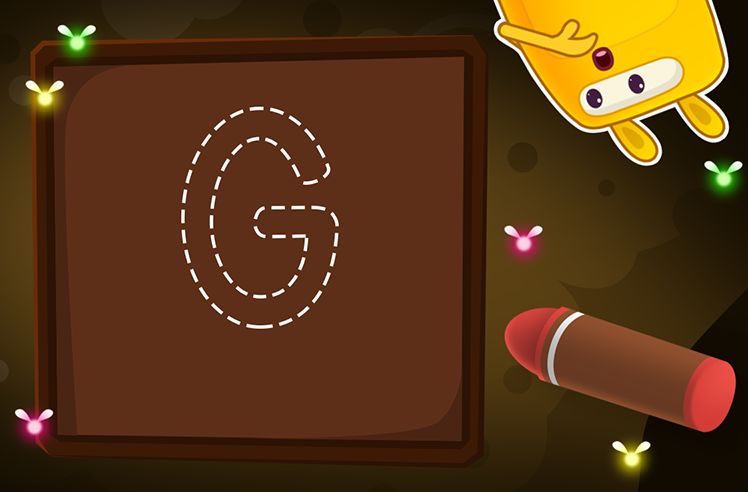
Time to Trace Uppercase G Game
Learn language skills by practicing to trace uppercase G.

Time to Trace Lowercase g Game
Get familiar with writing by learning to trace lowercase g.

Let's Make the Letter H Game
Let's take a look at how to make the letter H with this game.

Time to Trace Uppercase H Game
Learn language skills by practicing to trace uppercase H.

Time to Trace Lowercase h Game
Get familiar with writing by learning to trace lowercase h.

Tracing Small Letters With Standing & Sleeping Lines - i, l & t Game
Practice tracing small letters with standing and sleeping lines - i, l and t.

Let's Make the Letter I Game
Let's take a look at how to make the letter I with this game.

Time to Trace Uppercase I Game
Learn language skills by practicing to trace uppercase I.

Time to Trace Lowercase i Game
Get familiar with writing by learning to trace lowercase i.

Tracing Big Letters With Standing, Sleeping & Curvy Lines - J Game
Enjoy tracing big letters with standing, sleeping & curvy lines - J.

Tracing Small Letters With Standing & Curvy Lines - u & j Game
Kids will trace small letters with standing & curvy lines - u & j.

Let's Make the Letter J Game
Let's take a look at how to make the letter J with this game.

Time to Trace Uppercase J Game
Learn language skills by practicing to trace uppercase J.

Time to Trace Lowercase j Game
Get familiar with writing by learning to trace lowercase j.

Tracing Big Letters With Standing & Curvy Lines - K, M & N Game
Practice tracing big letters with standing & curvy lines - K, M & N.

Tracing Small Letters With Standing & Curvy Lines - k Game
Have fun tracing small letters with curvy & standing lines - k.

Let's Make the Letter K Game
Let's take a look at how to make the letter K with this game.

Time to Trace Uppercase K Game
Learn language skills by practicing to trace uppercase K.
What Is Writing for Kids?
Learning to write involves acquiring the ability to form letters, words, and sentences using various techniques like tracing and practicing sight words. It's a developmental process where kids enhance their fine motor skills and build a foundation for effective communication through written expression.
Writing for kids is the process of learning how to put thoughts and ideas into words on paper. It's an essential skill that helps children express themselves and communicate effectively. Learning to write can be challenging for young learners, as it involves coordination and practice. However, incorporating games and interactive activities can make the learning journey more enjoyable and easier.
Kids gradually develop their writing skills, starting with basic letters and progressing to forming sentences and paragraphs, fostering creativity and communication along the way.
Foundational Writing Skills for Kids
Let's look at a few important writing skills that kids need to learn for effective communication through writing.
Letter Tracing
Letter tracing for kids involves following the shapes of letters with a pencil or finger. It helps children learn the correct formation of letters and improves fine motor skills. Tracing also enhances letter recognition and reinforces the connection between visual and motor skills, setting a strong foundation for writing.
Do you want to make letter tracing fun for kids? Try our interactive Letter Tracing Games covering all A-Z letters for engaging and effective writing exercises!
Writing Sight Words
Sight words are words that children instantly recognize by sight or learn as a whole by sight without needing to sound them out. Identifying words by sight accelerates their reading speed and fluency. Writing sight words for kids involves practicing and memorizing common words that appear frequently in texts.
A few examples of sight words are he, she, they, his, you, yes, day, and, see, etc.
Writing sight words aids in building a strong reading foundation as sight words often can't be sounded out. Writing them repeatedly enhances recognition, spelling, and fluency, facilitating smoother reading.
Elevate the learning experience with our interactive Writing Sight Words Games , making learning enjoyable and fun.
How to Support and Promote a Love for Writing in Kids
- Reading Together : Immerse children in stories to ignite their imagination and storytelling abilities. Reading enhances their capacity to envision characters, settings, and plots, which translates into their own writing.
- Collaborative Writing : Begin with joint story creation, inspiring kids with diverse ideas and techniques. This collaborative approach paves the way for more independent writing endeavors.
- Start Small : Commence with concise sentences or brief paragraphs before progressing to more extensive compositions.
- Incorporating fun prompts like pictures: Incorporating visual elements through picture stories can facilitate comprehension and creativity.
- Supportive Guidance :
- Acknowledge Effort : Celebrate even the smallest writing accomplishments, recognizing the effort invested by young writers.
- Constructive Feedback : Offer valuable feedback to help them improve, sharing your writing insights and encouraging their progress.
- Motivation : Instill confidence and motivation, emphasizing that skill development takes time and practice.
Explore SplashLearn's curated collection of engaging online educational games and activities. These resources combine entertainment with learning, fostering your child's growth as a creative thinker and proficient writer.
Importance of Teaching Writing to Kids through Games
Utilizing online ELA games to improve writing skills is the best way to help kids fall in love with reading and writing. Here are a few notable benefits:
- Tracing Letters with Fun : Online writing games incorporate tracing letters in a playful manner, helping kids practice forming letters accurately and enhancing muscle memory.
- Sight Words Integration : Writing games online for kids integrate sight words into challenges, aiding kids in recognizing and recalling frequently used words effortlessly.
- Colorful Visuals : Vibrant visuals and interactive characters in games capture kids' attention, making the learning process more engaging and memorable.
- Interactive Characters : Interactive writing games with fun characters create a relatable learning environment, encouraging kids to write and communicate in a friendly, interactive setting.
What Are the 5 Best Fun Writing Games and Activities for Kids?
Here are a few fun writing games for elementary students by SplashLearn:
- Learn to Write the Sight Words Game
- Let’s Make the Letter E Game
- Tracing the Small Letters with Standing and Curvy Lines - b and p Game
- Tracing the Small Letters with Sleeping and Curvy Lines - e Game
How do you help kids practice writing?
- Printable Worksheets : Provide printable Writing worksheets and other writing learning resources for tracing letters, forming words, and practicing writing skills.
- Online Games : Provide interactive and engaging Writing games to play online that focus on letter formation, sight words, and creative writing exercises.
- Activities : Suggest writing activities for kids like journaling, creating stories, writing letters to family members, or using sensory writing trays to encourage regular writing practice.
How do you teach writing effectively to kids?
- Understand each child's writing level and needs, offering tailored activities and challenges to cater to their progress.
- Ask kids to write about their favorite superhero, a dream adventure, or their happiest memory. Such attractive prompts spark creativity and interest in learning.
- Integrate apps and online tools for engaging learning. Explore educational writing games for kids online for additional hands-on practice.
- Practicing daily is the key. Help kids set aside a specific time each day for practicing writing. Use writing practice games to check their understanding.
What are some specific skills and concepts that children can develop through writing games?
- Tracing Practice: Writing games involving tracing activities enhance fine motor skills and help in letter formation, ensuring neat handwriting. It helps kids practice forming letters accurately.
- Sight Words Mastery : Writing games reinforce recognition and usage of sight words, improving reading and writing fluency.
- Vocabulary Building : Games encourage the use of diverse words and expand vocabulary.
Your one stop solution for all grade learning needs.
55 Creative Writing Activities and Exercises

Have you ever heard these questions or statements from your students?
- I don’t know where to begin.
- How can I make my story interesting?
- I’m just not creative.
- What should my story be about?
If so, you won’t want to miss these creative writing activities.
What Are Creative Writing Activities?
Activities that teach creative writing serve as drills to exercise your student’s writing muscle. When used effectively, they help reluctant writers get past that intimidating blank paper and encourage the words to flow.
When I think of creative writing exercises , writing prompts immediately come to mind. And, yes, writing from a prompt is certainly an example of a creative writing activity (a highly effective one).
However, writing prompts are only one way to teach creative writing. Other types of activities include games, collaboration with others, sensory activities, and comic strip creation to name a few.
Unlike writing assignments, creative writing activities aren’t necessarily meant to create a perfectly polished finished project.
Instead, they serve as more of a warmup and imagination boost.
Picture-based writing exercises are especially fun. You can download one for free below!

get this picture prompt printable for free!
How to use creative writing exercises effectively.
When teaching creative writing , the most effective exercises inspire and engage the student.
Remember that worn-out prompt your teacher probably hauled out every year?
“What I Did This Summer…”
Cue the groaning.
Instead of presenting your student with lackluster topics like that one, let’s talk about ways to engage and excite them.
For Kids or Beginners
Early writers tend to possess misconceptions about writing. Many picture sitting down for hours straight, polishing a story from beginning to end.
Even for experienced writers, this is next-to-impossible to do. It’s preconceived ideas like these that overwhelm and discourage students before they’ve even started.
Instead of assigning an essay to complete, start with simple, short writing exercises for elementary students such as:
- Creating comic strips using a template
- Talking out loud about a recent dream
- Writing a poem using rhyming words you provide
- Creating an acrostic from a special word
Creative writing exercises don’t have to end in a finished piece of work. If the exercise encouraged creative thinking and helped the student put pen to paper, it’s done its job.
For Middle School
Creative writing activities for middle school can be a little more inventive. They now have the fundamental reading and writing skills to wield their words properly.
Here are some ideas for middle school writing exercises you can try at home:
- Creating Mad Lib-style stories by changing out nouns, verbs, and adjectives in their favorite tales
- Storyboarding a short film
- Writing a family newsletter
- Creating crossword puzzles
For High School
Your high school student may be starting to prepare for college essays and other important creative writing assignments.
It’s more critical than ever for her to exercise her writing skills on a regular basis.
One great way to keep your high schooler’s mind thinking creatively is to have her make “listicles” of tips or facts about something she’s interested in already.
Another fun and effective creative writing exercise for high school is to have your student retell classic stories with a twist.
List of 55 Creative Writing Activities for Students of All Ages
No matter what age range your students may be, I think you’ll find something that suits their personality and interests in this list of creative writing ideas. Enjoy!
- Using only the sense of hearing, describe your surroundings.
- Write a paragraph from your shoes’ point of view. How do they view the world? What does a “day in the life of a shoe” look like?
- Imagine what the world will be like in 200 years. Describe it.
- Write a letter to someone you know who moved away. What has he or she missed? Should he or she move back? Why?
- Make up an imaginary friend. What does he or she look like? What does he or she like to do?
- Create a story about a person you know. Use as many details as possible.
- Write a poem that describes a place you have been.
- Soak up the season you’re in with seasonal creative writing prompts. Here are some ideas for fall and winter .
- Write a song where each line starts with the next letter in the alphabet.
- Create a list of words related to something you love.
- Write a short story based on a true event in your life.
- Rewrite a chapter of your favorite book from the antagonist’s point of view.
- Write a letter to your future self. What do you want to make sure you remember?
- Go on a five-senses scavenger hunt. Find three items for each sense. Create a story using the items you found.
- Create a story around an interesting picture ( try these fun picture writing prompts! )
- Find an ad in a magazine or elsewhere and rewrite the description to convince people NOT to buy the advertised item.
- Write a story using the last word of each sentence as the first word of the next.
- Describe everything you’re sensing right now, using all five senses.
- Write a list of animals A to Z with a one-sentence description of each one. Feel free to include imaginary animals.
- Design your dream room in detail.
- Write a script of yourself interviewing a famous person. Include his or her answers.
- Describe what high school would be like if you lived on the moon. What would you be learning about? How would you be learning it?
- Describe a day in the life of a famous person in history. Include both mundane and exciting details of things they may have experienced on a normal day.
- Pick up something on a bookshelf or end table nearby. Now write a commercial script for it to convince your audience that they absolutely must own this thing.
- Plan a birthday party for your best friend. Describe the decorations, food, and everything else.
- Write a very short story about three siblings fighting over a toy. Now rewrite it twice, each time from a different character’s perspective.
- Tell a story from the point of view of a pigeon on a city street.
- Create a menu for a deli you’ll be opening soon. Name each sandwich after something or someone in real life and list the fillings and type of bread.
- Pretend you just became famous for something. Write 3 exciting newspaper headlines about the topic or reason behind your newfound fame.
- Keep a one-line-a-day journal. Every day, write down one thought or sentence about something that happened that day or how you felt about the day.
- Have you ever had a nightmare? Write what happened but with a new ending where everything turns out okay (perhaps the monster was your dad in a costume, preparing to surprise you at your birthday party).
- Write a “tweet” about something that happened to you recently, using only 140 characters.
- Take an important event in your life or the life of someone in your family. Write one sentence answering each of the 6 journalistic questions: Who, What, When, Where, Why, and How.
- Set a timer for 5 minutes and write nonstop, starting with the words “I remember.” If you get stuck, write “I remember” again until you get unstuck.
- Pick something you use often (a toothbrush, your desk, etc). Then tell the story of how it was invented. If you don’t know, make something up.
- Choose a princess or hero and write a one-paragraph story about him or her traveling to a distant land.
- Pretend you are a tour guide for a local attraction. It can be a library, a park, or a museum, but it could also be a place that wouldn’t normally hold tours (such as an arcade). Write a speech about what you tell your tour group as you walk around the attraction.
- Create a marketing brochure for your favorite activity or fun place to go.
- Make a list of 10 future story settings. Write one sentence describing each. For example, “ in the dark, musty cellar of my grandmother’s house, surrounded by dried-up jars of canned peaches… ”
- Make a list of foods included in a dinner party catered by the world’s worst cook, describing how each course looks, smells, and tastes. Include your reactions while eating it.
- Write out your own version of instructions for playing your favorite game.
- Pretend you’ve lost your sight for one night. Describe going out to eat at a restaurant, using smells, textures, and sounds to tell your story.
- Write a script for an interesting phone conversation in which the reader can only hear one side.
- Tell the story of an object someone threw away from the perspective of the person who tossed it out. Then tell the story of that same object from the perspective of a person who finds it and deems it a treasure.
- List your 3 least favorite chores. Pick one and write a one paragraph detailing why you can’t possibly complete that chore ever again.
- Write an excerpt from your dog’s diary (pretend he keeps one).
- Write the script for a movie trailer—real or imagined.
- Create an acrostic for a holiday of your choice.
- Pretend you’re the master of a role-playing game, describing a sticky situation in which the other players now find themselves. Describe the scenario in writing.
- Compose a funny or dramatic caption for a photo.
- Parents, place a textured object in a box without letting your student see it. Have him or her reach in, touch the object, and then describe how it feels.
- Write lyrics for a parody of a song.
- Make a list of 10-20 songs that would be played if a movie was made about your life.
- Describe the sounds, smells, sights, and textures you’d experience if you went to the beach for the day.
- Write an election speech with ludicrous and impossible campaign promises.
One of the best ways to encourage students to write regularly is by providing fun creative writing activities .
They serve to encourage both the habit and mindset of writing with imagination. If you need extra help with that, check out Creative Freewriting Adventure :
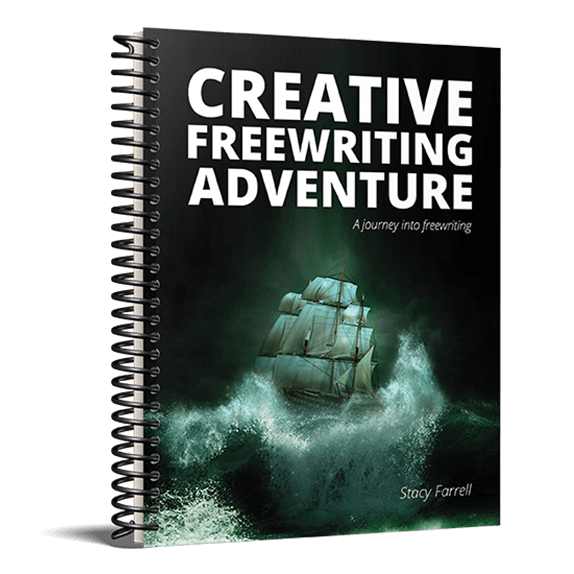
bring excitement into your student’s writing – no prep required!
About the author.
Jordan Mitchell

10 fun writing activities for the reluctant writer
10 FUN WRITING ACTIVITIES FOR THE RELUCTANT WRITER
No doubt about it – writing isn’t easy. It is no wonder that many of our students could be described as ‘reluctant writers’ at best. It has been estimated by the National Association of Educational Progress that only about 27% of 8th and 12th-grade students can write proficiently.
As educators, we know that regular practice would go a long way to helping our students correct this underachievement, and sometimes, writing prompts just aren’t enough to light the fire.
But how do we get students, who have long since been turned off writing, to put pen to paper and log the requisite time to develop their writing chops?
The answer is to make writing fun! In this article, we will look at some creative writing activities where we can inject a little enjoyment into the writing game.

25 Fun Daily Writing Tasks
Quick Write and JOURNAL Activities for ALL TEXT TYPES in DIGITAL & PDF PRINT to engage RELUCTANT WRITERS .
⭐⭐⭐⭐⭐ ( 18 reviews )
1. Poetry Scavenger Hunt
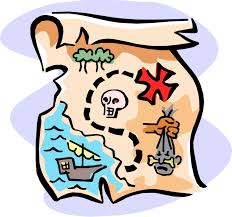
The Purpose: This activity encourages students to see the poetry in the everyday language around them while helpfully reinforcing their understanding of some of the conventions of the genre.
The Process: Encourage students to ‘scavenge’ their school, home, and outside the community for snippets of language they can compile into a piece of poetry or a poetic collage. They may copy down or photograph words, phrases, and sentences from signs, magazines, leaflets or even snippets of conversations they overhear while out and about.
Examples of language they collect may range from the Keep Out sign on private property to the destination on the front of a local bus.
Once students have gathered their language together, they can work to build a poem out of the scraps, usually choosing a central theme to give the piece cohesion. They can even include corresponding artwork to enhance the visual appeal of their work, too, if they wish.
The Prize: If poetry serves one purpose, it is to encourage us to look at the world anew with the fresh eyes of a young child. This activity challenges our students to read new meanings into familiar things and put their own spin on the language they encounter in the world around them, reinforcing the student’s grasp on poetic conventions.
2. Story Chains
The Purpose: Writing is often thought of as a solitary pursuit. For this reason alone, it can be seen as a particularly unattractive activity by many of our more gregarious students. This fun activity exercises students’ understanding of writing structures and engages them in fun, creative collaboration.
The Process: Each student starts with a blank paper and pen. The teacher writes a story prompt on the whiteboard. You’ll find some excellent narrative writing prompts here . For example, each student spends two minutes using the writing prompt to kick-start their writing.
When they have completed this part of the task, they will then pass their piece of paper to the student next to them. Students then continue the story from where the previous student left off for a given number of words, paragraphs, or length of time.
If organized correctly, you can ensure students receive their own initial story back at the end for the writing of the story’s conclusion .
The Prize: This fun writing activity can be used effectively to reinforce student understanding of narrative writing structures, but it can also be fun to try with other writing genres.
Working collaboratively motivates students to engage with the task, as no one wants to be the ‘weak link’ in the finished piece. But, more than that, this activity encourages students to see writing as a communicative and creative task where there needn’t be a ‘right’ answer. This encourages students to be more willing to take creative risks in their work.
3. Acrostic Associations
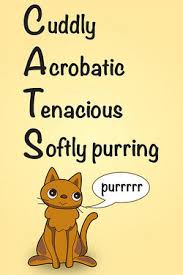
The Purpose: This is another great way to get students to try writing poetry – a genre that many students find the most daunting.
The Process: Acrostics are simple poems whereby each letter of a word or phrase begins a new line in the poem. Younger students can start off with something very simple, like their own name or their favorite pet and write this vertically down the page.
Older students can take a word or phrase related to a topic they have been working on or have a particular interest in and write it down on the page before beginning to write.
The Prize: This activity has much in common with the old psychiatrist’s word association technique. Students should be encouraged to riff on ideas and themes generated by the focus word or phrase. They needn’t worry about rhyme and meter and such here, but the preset letter for each line will give them some structure to their meanderings and require them to impose some discipline on their wordsmithery, albeit in a fun and loose manner.
4. The What If Challenge

The Purpose: This challenge helps encourage students to see the link between posing interesting hypothetical questions and creating an entertaining piece of writing.
The Process: To begin this exercise, have the students come up with a single What If question, which they can then write down on a piece of paper. The more off-the-wall, the better!
For example, ‘What if everyone in the world knew what you were thinking?’ or ‘What if your pet dog could talk?’ Students fold up their questions and drop them into a hat. Each student picks one out of the hat before writing on that question for a suitable set amount of time.
Example What If Questions
- “What if you woke up one day and found out that you had the power to time travel?”
- “What if you were the last person on Earth? How would you spend your time?”
- “What if you were granted three wishes, but each one came with a terrible consequence?”
- “What if you discovered a secret portal to another world? Where would you go, and what would you do?”
- “What if you woke up one day with the ability to communicate with animals? How would your life change?”
The Prize: Students are most likely to face the terror of the dreaded Writer’s Block when they are faced with open-ended creative writing tasks.
This activity encourages the students to see the usefulness of posing hypothetical What If questions, even random off-the-wall ones, for kick-starting their writing motors.
Though students begin by answering the questions set for them by others, please encourage them to see how they can set these questions for themselves the next time they suffer from a stalled writing engine.
5. The Most Disgusting Sandwich in the World

The Purpose: Up until now, we have looked at activities encouraging our students to have fun with genres such as fiction and poetry. These genres being imaginative in nature, more easily lend themselves to being enjoyable than some of the nonfiction genres.
But what about descriptive writing activities? In this activity, we endeavor to bring that same level of enjoyment to instruction writing while also cleverly reinforcing the criteria of this genre.
The Process: Undoubtedly, when teaching instruction writing, you will at some point cover the specific criteria of the genre with your students.
These will include things like the use of a title, numbered or bulleted points, time connectives, imperatives, diagrams with captions etc. You will then want the students to produce their own piece of instruction writing or procedural text to display their understanding of how the genre works.
But, why not try a fun topic such as How to Make the Most Disgusting Sandwich in the World rather than more obvious (and drier!) topics such as How to Tie Your Shoelaces or How to Make a Paper Airplane when choosing a topic for your students to practice their instruction writing chops?
Example of a Most Disgusting Sandwich Text
The Prize: As mentioned, with nonfiction genres, in particular, we tend to suggest more banal topics for our students to work on while internalizing the genre’s criteria. Enjoyment and acquiring practical writing skills need not be mutually exclusive.
Our students can just as quickly, if not more easily, absorb and internalize the necessary writing conventions while engaged in writing about whimsical and even nonsensical topics.
if your sandwich is entering the realm of horror, be sure to check our complete guide to writing a scary story here as well.
Daily Quick Writes For All Text Types

Our FUN DAILY QUICK WRITE TASKS will teach your students the fundamentals of CREATIVE WRITING across all text types. Packed with 52 ENGAGING ACTIVITIES
6. Diary Entry of a Future Self

The Purpose: This activity allows students to practice personal writing within diary/journal writing conventions. It also challenges them to consider what their world will be like in the future, perhaps stepping a foot into the realm of science fiction.
The Process: Straightforwardly, after working through some examples of diary or journal writing, and reviewing the various criteria of the genre, challenge the students to write an entry at a given milestone in the future.
This may be when they leave school, begin work, go to university, get married, have kids, retire, etc. You may even wish to get the students to write an entry for a series of future milestones as part of a more extended project.
Example of Message to Future Me Text
The Prize: Students will get a chance here to exercise their understanding of this type of writing , but more than that, they will also get an opportunity to exercise their imaginative muscles too. They will get to consider what shape their future world will take in this engaging thought experiment that will allow them to improve their writing too.
7. Comic Strip Script
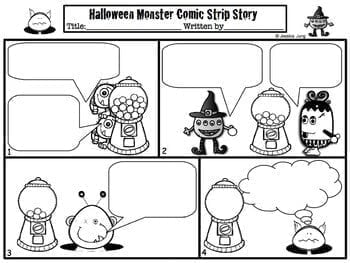
The Purpose: Give your students the chance to improve their dialogue writing skills and work on their understanding of character development in this fun activity which combines writing with a series of visual elements.
The Process: There are two ways to do this activity. The first requires you to source or create a comic strip without the dialogue the characters are speaking. This may be as straightforward as using whiteout to erase the words in speech bubbles and making copies for your students to complete.
Alternatively, provide the students with photographs/pictures and strips of cards to form their action sequences . When students have their ‘mute’ strips, they can begin to write the dialogue/script to link the panels together.
The Prize: When it comes to writing, comic strips are probably one of the easier sells to reluctant students! This activity also allows students to write for speech. This will stand to them later when they come to produce sections of dialogue in their narrative writing or when producing play or film scripts.
They will also develop their visual literacy skills as they scan the pictures for clues of tone and context before they begin their writing.
Keep It Fun
Just as we should encourage our students to read for fun and wider educational benefits, we should also work to instil similar attitudes towards writing. To do this means we must work to avoid always framing writing in the context of a chore, that bitter pill that must be swallowed for the good of our health.
There is no getting away from the fact that writing can, at times, be laborious. It is time-consuming and, for most of us, difficult at the best of times. There is a certain, inescapable amount of work involved in becoming a competent writer.
That said, as we have seen in the activities above, with a bit of creative thought, we can inject fun into even the most practical of writing activities . All that is required is a dash of imagination and a sprinkling of effort.
8. Character Interviews
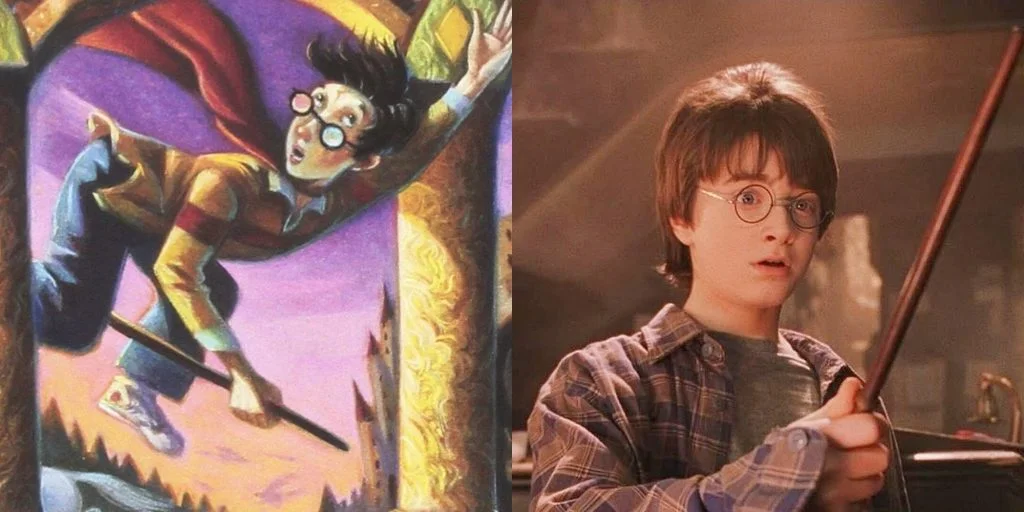
The Purpose: Character interviews as writing activities are excellent for students because they encourage creative thinking, character development, and empathy. The purpose of this activity is to help students delve deeper into the minds of the characters they are creating in their stories or reading about in literature. By conducting interviews with these characters, students gain a better understanding of their personalities, motivations, and perspectives.
The Process of character interviews involves students imagining themselves as interviewers and their characters as interviewees. They can either write out the questions and answers in a script-like format or write a narrative where the character responds to the questions in their own voice.
The Prize: Through character interviews, students learn several valuable skills:
- Character Development: By exploring various aspects of their characters’ lives, backgrounds, and experiences, students can develop more well-rounded and authentic characters in their stories. This helps make their fictional creations more relatable and engaging to readers.
- Empathy and Perspective: Conducting interviews requires students to put themselves in their characters’ shoes, considering their thoughts, emotions, and struggles. This cultivates empathy and a deeper understanding of human behavior, which can be applied to real-life situations as well.
- Voice and Dialogue: In crafting the character’s responses, students practice writing authentic dialogue and giving their characters unique voices. This skill is valuable for creating dynamic and believable interactions between characters in their stories.
- Creative Expression: Character interviews provide a creative outlet for students to let their imaginations run wild. They can explore scenarios that may not appear in the main story and discover new aspects of their characters they might not have considered before.
- Critical Thinking: Formulating questions for the interview requires students to think critically about their characters’ personalities and backgrounds. This exercise enhances their analytical skills and storytelling abilities.
Overall, character interviews are a dynamic and enjoyable way for students to delve deeper into the worlds they create or the literature they read. It nurtures creativity, empathy, and writing skills, empowering students to become more proficient and imaginative writers.
9. The Travel Journal

The Purpose: Travel journal writing tasks are excellent for students as they offer a unique and immersive way to foster creativity, cultural awareness, and descriptive writing skills. The purpose of this activity is to allow students to embark on a fictional or real travel adventure, exploring new places, cultures, and experiences through the eyes of a traveller.
The process of a travel journal writing task involves students assuming the role of a traveler and writing about their journey in a journal format. They can describe the sights, sounds, tastes, and emotions they encounter during their travels. This activity encourages students to use vivid language, sensory details, and expressive writing to bring their travel experiences to life.
The Prize: Through travel journal writing tasks, students will learn several valuable skills:
- Descriptive Writing: By describing their surroundings and experiences in detail, students enhance their descriptive writing skills, creating engaging and vivid narratives.
- Cultural Awareness: Travel journals encourage students to explore different cultures, customs, and traditions. This helps broaden their understanding and appreciation of diversity.
- Empathy and Perspective: Through writing from the perspective of a traveler, students develop empathy and gain insight into the lives of people from different backgrounds.
- Research Skills: For fictional travel journals, students might research specific locations or historical periods to make their narratives more authentic and accurate.
- Reflection and Self-Expression: Travel journals offer a space for students to reflect on their own emotions, thoughts, and personal growth as they encounter new experiences.
- Creativity and Imagination: For fictional travel adventures, students get to unleash their creativity and imagination, envisioning fantastical places and scenarios.
- Language and Vocabulary: Travel journal writing tasks allow students to expand their vocabulary and experiment with expressive language.
Overall, travel journal writing tasks inspire students to become more observant, empathetic, and skilled writers. They transport them to new worlds and foster a sense of wonder and curiosity about the world around them. Whether writing about real or imaginary journeys, students develop a deeper connection to the places they encounter, making this activity both educational and enjoyable.
10. The Fairy Tale Remix

The Purpose: A fairy tale remix writing activity is a fantastic creative exercise for students as it allows them to put a unique spin on classic fairy tales, fostering imagination, critical thinking, and storytelling skills. This activity encourages students to think outside the box, reinterpret well-known tales, and explore their creative potential by transforming traditional narratives into something entirely new and exciting.
The process of a fairy tale remix writing activity involves students selecting a familiar fairy tale and altering key elements such as characters, settings, plot twists, or outcomes. They can modernize the story, change the genre, or even mix different fairy tales together to create a wholly original piece.
The Prize: Through this activity, students will learn several valuable skills:
- Creative Thinking: Students exercise their creativity by brainstorming unique concepts and ideas to remix the fairy tales, encouraging them to think imaginatively.
- Critical Analysis: Analyzing the original fairy tale to identify essential elements to keep and areas to remix helps students develop critical thinking skills and understand storytelling structures.
- Writing Techniques: Crafting a remix requires students to use descriptive language, engaging dialogue, and well-developed characters, helping them hone their writing techniques.
- Perspective and Empathy: Remixing fairy tales allows students to explore different character perspectives, promoting empathy and understanding of diverse points of view.
- Genre Exploration: Remixing fairy tales can introduce students to various genres like science fiction, fantasy, or mystery, expanding their literary horizons.
- Originality: Creating their own narrative twists and unexpected plots encourages students to take ownership of their writing and develop a unique voice.
- Storytelling: Students learn the art of compelling storytelling as they weave together familiar elements with innovative ideas, captivating their readers.
By remixing fairy tales, students embark on a creative journey that empowers them to reimagine well-loved stories while honing their writing skills and imaginative prowess. It’s an engaging and enjoyable way for students to connect with literature, explore new possibilities, and showcase their storytelling talents.
Top 5 Tips for Teaching Engaging Creative Writing Lessons
Teaching creative writing can be a thrilling discovery journey for students and educators alike. To foster a love for storytelling and unleash the imaginative prowess of your students, here are five engaging tips for your creative writing lessons:
1. Embrace Playfulness : Encourage a spirit of playfulness and experimentation in your classroom. Encourage students to explore unconventional ideas, characters, and settings. Use fun writing prompts like “What if animals could talk?” or “Imagine a world where gravity is reversed.”
2. Incorporate Visual Stimuli : Visual aids can be powerful creative catalysts. Show intriguing images or short videos to spark students’ imaginations. Ask them to describe what they see, then guide them to weave stories around these visuals. This approach can lead to unexpected and captivating narratives.
3. Encourage Peer Collaboration : Foster community and collaboration among your students. Organize group writing activities where students can brainstorm, share ideas, and build upon each other’s stories. This not only enhances creativity but also promotes teamwork and communication skills.
4. Explore Different Genres : Introduce students to various writing genres—fantasy and science fiction to mystery and historical fiction. Let them experiment with different styles and find what resonates most with their interests. Exposing students to diverse genres can broaden their horizons and inspire fresh ideas.
5. Celebrate Individuality : Encourage students to infuse unique experiences and perspectives into their writing. Provide opportunities for them to write about topics that are meaningful to them. Celebrate their voices and help them discover the power of their narratives.
Remember, the key to teaching creative writing is to create a supportive and inspiring environment where students feel empowered to take risks and explore the limitless possibilities of storytelling. By embracing these tips, you can transform your classroom into a vibrant imagination and literary exploration hub. Happy writing!
MORE FUN WRITING ACTIVITIES FOR YOU

7 Fun Writing Sub Plans for Substitute Teachers

25 Fun Christmas Writing Tasks for Students
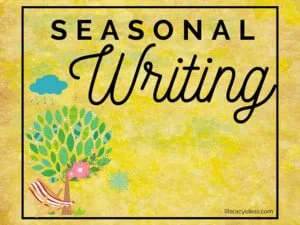
5 Fun Seasonal Writing Activities Students and Teachers Love

10 Fun Classroom Writing Games to Improve Literacy Skills

The Writing Process

7 Evergreen Writing Activities for Elementary Students
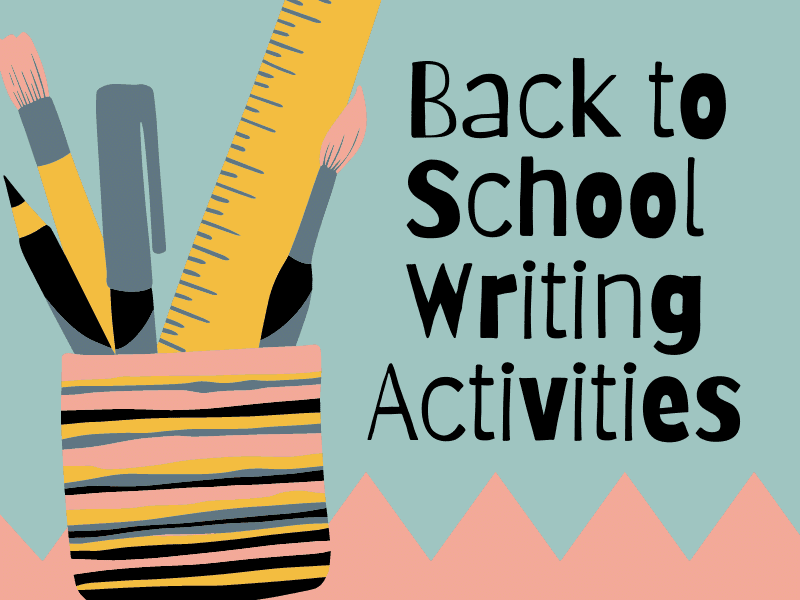
17 Fun First Day Of School Writing Activities
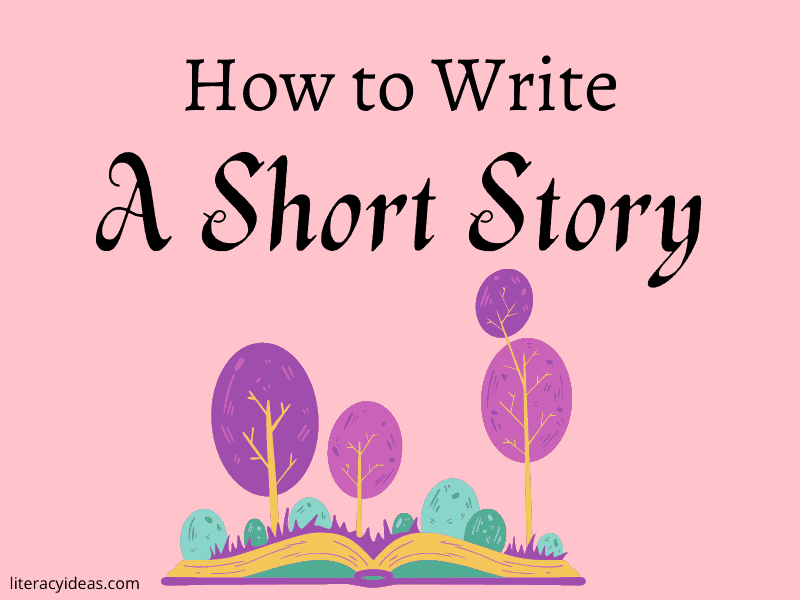
Short Story Writing for Students and Teachers

10-Minute Writing Games to Play with Your Students
Jen Schneider Blog , Writing writing 1
Want some quick games to share with your students during transitions or as attention-getters. Play these fun games independently or with groups! Here are a few of my favorites 10-minute writing games to play with your students. This post uses some affiliate links. Purchases from these links result in a small commission to help sustain this site.

Word Association Game
Word association games are perfect for 10-minute writing games! Start by giving students a random word and ask them to write down the first word that comes to their mind when they hear it. Then, have them pass their paper to the person next to them and repeat the process with the new word. Set a timer for 10 minutes and see how far around the circle they can go, building off of each other’s words. This game is a blast for generating vocabulary words or words to use in future writing prompts or stories.
Writing Roulette
My students beg to play writing roulette! I give each student five different colored sticky notes (or use this FREE Jamboard template ).
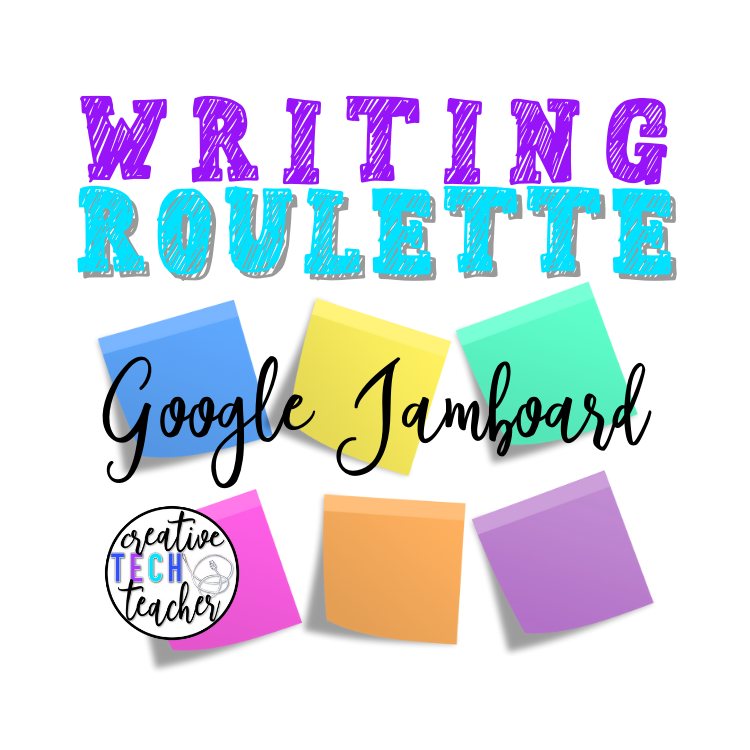
Each sticky note has a different topic. For example, here are the literary elements I use for my students. You can change these up depending on your grade level.
- Yellow: character
- Blue: quotation
- Pink: setting
- Green: conflict
- Orange: theme
Have your students each generate one of the literary elements on each colored sticky note. Make sure they write only one idea per note. Mix up the sticky notes, then give the students five sticky notes (one on each topic) to generate their own story. We LOVE sharing these with the class. As a bonus, expand on the quick stories and create a published, polished piece.
Literary Jenga
Literally playing a game when writing is so much fun! Write creative writing prompts on the sides of Jenga blocks (such as “Write a story in which the main character is an animal” or “Describe a place you’ve never been”) and stack them up. Students take turns pulling a block and then writing for 2-3 minutes based on the prompt they see. The game continues until the tower falls, and then students can read aloud what they’ve written.
Finish the Story Writing Game
This game is also called story or paper pass. I remember playing this writing game in school. I loved it then as much as I love it as a teacher! First, give students the first line of a story and have them write for 2-3 minutes. Then, have them pass their paper to the person next to them and that person continues the story for 2-3 minutes. Continue this process until everyone has contributed, and see how the story turned out in the end.
Random Word Stories
Use this random word generator to pick a fun, unique word. Have your students write a story using that word as a focus. You can have each student select their own word or use a class word.
Descriptive Writing Game
Many ELA curriculums have descriptive writing as an assessment. Why not teach descriptive writing skills with a 10-minute writing game! First, ask students to close their eyes and imagine a scene you describe to them, such as a beach or a forest. Give them 10 minutes to write a detailed description of what they see in their mind’s eye. Encourage them to use sensory language and descriptive adjectives to really paint a picture with their words. Share the stories, and as a bonus, have students illustrate their writing. You can also adapt this and share a picture as a writing prompt starter. Show students a picture or image and give them 10 minutes to write a story or poem based on what they see. Encourage them to be creative and use their imagination to build a story around the picture.
Character Creation Game
Students love creating their own characters! Have students brainstorm a character by answering questions about them, such as their name, age, occupation, likes and dislikes, fears, etc. Then, set a timer for 10 minutes and have them write a short story or scene featuring that character. You can add to the fun by having two characters team up together to create a new story or have a conversation with one another based on their characters’ backgrounds.
Six-Word Stories
Challenge students to write a complete story in just six words, such as “For sale: baby shoes, never worn.” Set a timer for 10 minutes and see how many six-word stories they can create.
Mad Libs Game
The old Mad Libs games are so much fun! I remember having paper Mad Libs books that my siblings and I giggled over with delight. Online Mad Libs games let students work independently to create funny stories. I love using Mad Libs online !
Fan Fiction
My students absolutely love writing fan fiction. This gives them a chance to explore stories on a deeper level, and change the outcomes to what they really wanted to happen in the book! Have students choose a favorite book or movie character and write a short story featuring that character in a new adventure or scenario. Set a timer for 10 minutes and see how well they can capture the voice and personality of the character in their writing.
Story Cubes
Use storytelling dice or story cubes with pictures on each side, and have students roll the dice to create a story. Set a timer for 10 minutes and challenge students to create a story that includes all of the pictures they rolled. Share the stories in small groups or with the full class.
Writing Prompts
Using writing prompts in the classroom is an effective way to encourage a love for writing in students. Here are five ways to inspire and engage middle school students:
Daily writing prompts
Start the day with a short 10-minute writing exercise that covers various genres and themes. Use this list of 25 daily prompts to get started.
Structured writing prompts
Use prompts as a starting point for more structured writing assignments such as essays or research papers. This encourages students to think critically and provides specific guidelines for the writing task. Use this list of 10 structured prompts to get started.
Group brainstorming
Encourage students to work together in small groups to generate their own writing prompts. This fosters collaboration and creativity.
Writing prompt dares
Students can create their own writing prompt dares or use these 15 writing prompt dare examples to get started. These are great for group brainstorming prompts.
Try out this 52 writing prompt workbook . You even get an editable Canva link to add your own unique prompts!

Get ready for 10-minute writing games to use in your classroom! These games can be scaffolded and differentiated for all grade levels. What writing games do you use in your classroom!
Creative writing games: A great way to unleash your creative side @
[…] technique of creative writing involves the creation of tales. The exploration of worlds, and the creation of people and situations that come to […]
Leave a Reply Cancel reply
Your email address will not be published. Required fields are marked *
Privacy Overview

8 Fantastically Fun Writing Games For Kids

Writing is a life skill your child will need during their time at school and beyond. Teaching children to write can be challenging, but there are many ways to make it simple, stress-free, and enjoyable for both you and your child!
Introducing fun writing activities and games can transform your child's attitude to writing, so we’re bringing you our very own list of the best writing games for kids that you can try anytime, anywhere!
(Psst...If you're in a hurry, jump to the best writing game for kids )
Unscramble the Sentences
This writing game offers a great opportunity for your child to test their sentence structure skills, whether they’re learning to write complete sentences, or creating more complex sentences.
How to play:
- On a sheet of paper, write down a sentence.
- Cut each word out from the paper and scramble the new pieces with your hands.
- Ask your child to put the words into the correct order to make the complete sentence.
Unscramble the Sentences is pretty easy to set up, and you can either play on paper, or online! On Night Zookeeper , we’ve transformed Unscramble the Sentences into a fun, interactive experience called Waterfall Word Jumble:
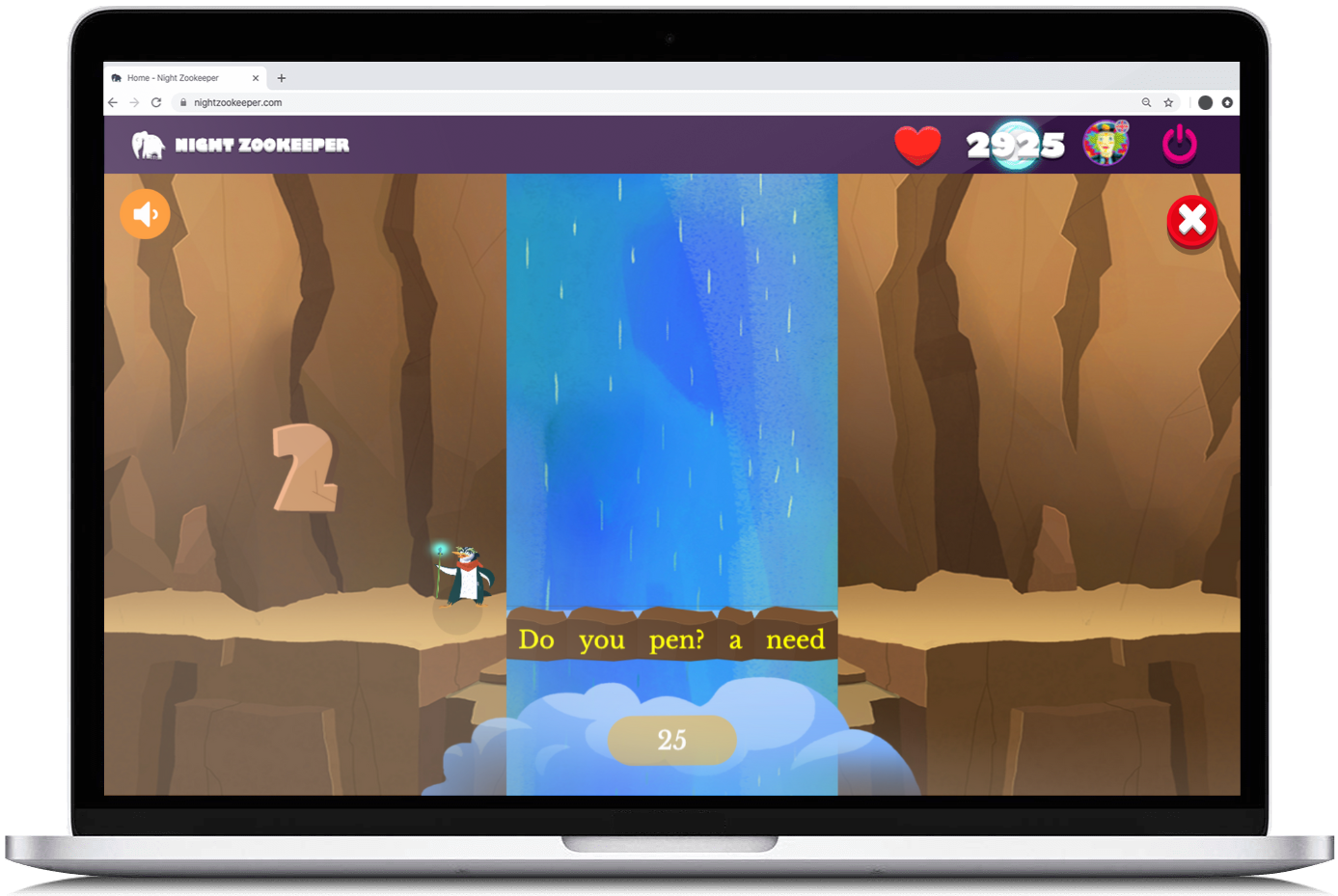
Matching Word Game
Matching words is a popular game to play in the classroom, or at home, by yourself or with fellow classmates or family. There are endless possibilities when it comes to this game through different types of matching; you can ask your child to match synonyms, antonyms, pronouns, and the list goes on!
- First, decide on the theme of the game. In this example, we’ll be matching antonyms, or opposite words.
- Start by cutting a sheet of paper into eight different pieces. In four of the pieces, write down your original words, and in the remaining four pieces, their opposites.
- Once all your words are ready, ask your child to match each word to their opposite meaning!
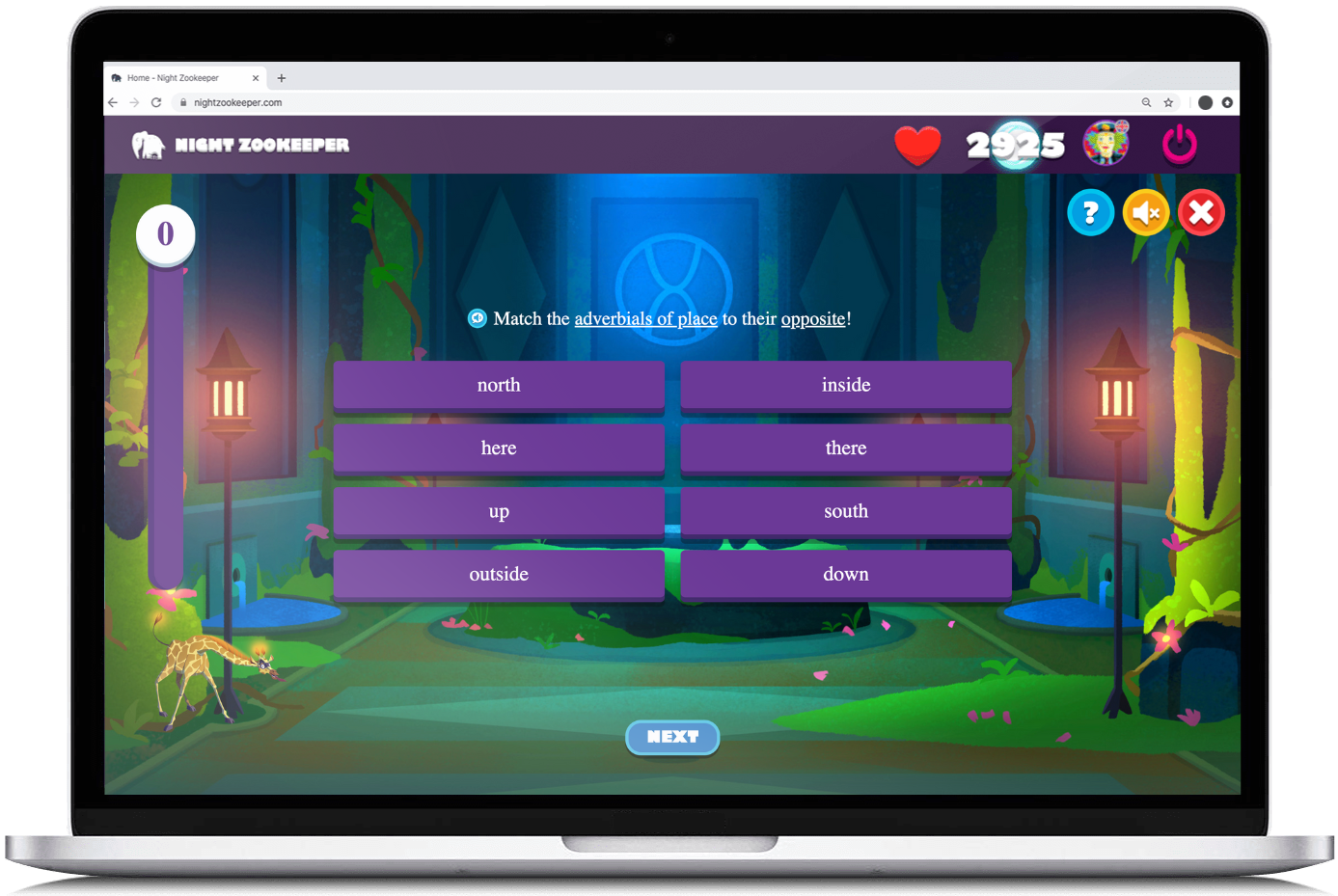
Use the example above to create your first matching word game, or get your child to play Maji’s Matches on Night Zookeeper !
Drawing & Writing Game
Drawing and writing go hand-in-hand , as their synergy promotes the development of creativity, imagination, motor skills, and even critical thinking!
There are many drawing games out there, but perhaps the most popular one is Pictionary. Even if you don’t have the board game version, you can set up your own version of Pictionary, and base it on topics of interest for your child, or to consolidate knowledge learned at school or during homeschool lessons.
This is a multiplayer game, so it’s best to play as a group, either with classmates or family.
- Start by gathering sheets of paper and coloring pencils or pens. The game starts when the first player writes a description of whatever they want the second player to draw.
- Once the second player completes their drawing, they must hide the original description and get the third player to write a description of what they see.
- Once the third player has written this description, they must hide the original drawing before asking the fourth player to draw what is written on the paper and so forth.
- When the game ends, you should have a sheet of paper full of funny descriptions and drawings!
Storytelling Cards
To play this story writing game, you’ll need to make five storytelling cards for each component of a story:
Once you’re done creating your cards, mix them up and ask your child to pick a card from each category. After they’ve pulled a card from each stack, get them to use their creative writing skills to write an original story using the cards they chose. This is a fun creative writing game to take on a roadtrip or when you’re traveling, as storytelling cards allow for hundreds of possible combinations, keeping your child entertained for potentially hours!
Fill in the Gaps
If you feel that your child is not yet ready to write a full story on their own, this creative writing activity may be exactly what they need to encourage them to start thinking creatively.
- Write a short story on a sheet of paper and leave some intentional gaps.
- Then, ask your child to fill these gaps with nouns, verbs, adjectives, adverbs, and even punctuation.
- Once they’ve filled all the gaps, they’ll have a completed story to read and share with their family and friends!
You can take excerpts from your child’s favorite storybooks, or try Penguin’s Paragraphs on Night Zookeeper !

This fun writing game is a classic, and remains a favorite to this day! Its versatility allows the game to be played in the classroom, at home, with pre-k students, high school students, and even during family game nights!
Hangman is a great writing game to improve your child’s vocabulary knowledge. It’s also an effective way to consolidate more technical words introduced in other subjects (such as math or science).
- Pick a topic & a game host
- The game host will choose a word and, on a sheet of paper, draw a line for each letter of the word the other players are guessing.
- Players will take turns to guess letters. If they get it right, the host must write the letter in the correct line. If not, they’ll draw a line for each wrong letter guessed until the hangman is complete.
- You can let the players guess the whole word once they think they have the right answer, and award extra points if they’re correct.
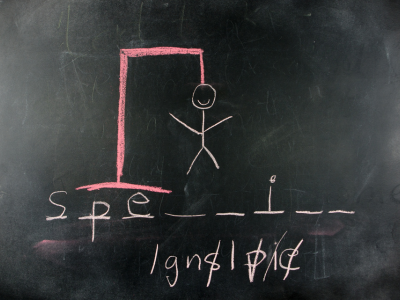
Quick-fire Tales
This is another story writing game that is perfect for on-the-go learning and can be enjoyed by even the most reluctant writers! For this educational game, your child will have to answer rapid fire questions with the aim to create a story from scratch. They’ll have five seconds to come up with an answer for each of the questions, and you should challenge them to be as creative and descriptive as they can!
- Get ready by setting up a 5-second timer.
- Here are the five questions needed to play Quick-fire Tales:
- Get your child to answer each of the five questions before the time runs out, and make a note of your child’s answers.
- Once they’ve answered all the questions, read their answers back to them and challenge their storytelling abilities by encouraging them to tell you more about this story!
The Ultimate Writing Game: Night Zookeeper

Night Zookeeper is the ultimate writing game for kids . It is home to thousands of writing games, challenges and competitions which have inspired millions of children worldwide to love writing.
On our program, your child will create original characters to power up through completing exciting games, interactive lessons and engaging writing prompts. As they progress, your child will build up their own Night Zoo and unlock new parts of the map, continuously incentivising them to write more.
“My daughter has never loved writing, but this game has made writing come alive for her. She can't wait to get on Night Zookeeper everyday!” - Michelle, parent
Make writing fantastically fun for your child today!
Sign up now to get a FREE 7-day trial:
Got any questions about Night Zookeeper? Reach out to us at [email protected] , or via our social media pages:

Make Reading & Writing Fantastically Fun!
- Award-winning reading & writing program for kids
- Improves spelling, grammar, punctuation & vocabulary
- Over 1,000 different learning games and activities

“My Child Hates Writing.” What do I do?

25 Creative Writing Prompts for Kids
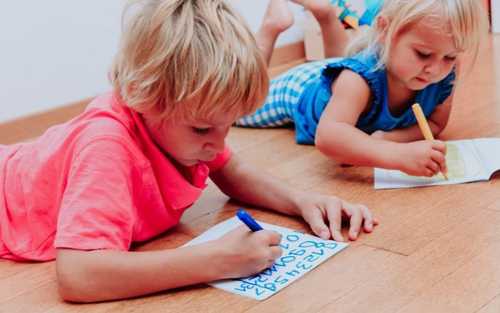
Top 7 Writing Activities For Kids


- Topmarks Search
- Whiteboard Resources
- Learning Games
- Topmarks Apps
- Topmarks Blog
Play these fun English Games for 7-11 year olds
Choose a category:.

Points of View Newspaper Report
Witnesses to accidents can see different things. Read and listen to two witness reports of a skateboarding accident, and learn about how journalists structure newspaper reports and use verbs, adverbial phrases and pronouns to create an effect.

Creepy Verbs and Adverbs in Super Stories
Transform a boring horror story into a bestseller by selecting effective verbs and adverbs to increase its impact and make it more exciting. Select illustrations that highlight the horror as the story of the Sea Cave unfolds.

Finish the Story: Bushfire
Edit the comic book adventure called Bushfire to make the story more interesting. Choose a conclusion for the story and then improve the grammar by looking changing nouns to pronouns, by adding adverbs and choosing saying verbs.

Missing Pop Star Puzzle
Work out what happened to the missing celebrity and write a newspaper article about the event. Lots of tips on improving your writing style.

Super Stories - Nouns and Adjectives
A game that can help you to improve your use of nouns and adjectives. You get to be an editor who improves a fairly dull story into a bestselling horror story. Select great nouns, adjectives and illustrations to improve the story's impact.

Wonderful Words, Creative Stories about Space
improve two simple sentences by adding descriptive words. Observe how your choices affect the animated images. Use your sentences as inspiration for a story about space. A good site for demonstrating how to write more interesting sentences.

Riddle of the Black Panther
Track down a black panther reported to be prowling around a town. Interview witnesses and gather information from sources such as a website, an advertisement and a newspaper article. A good guide to writing a report.

Wonderful Words, Creative Stories Beach Theme
An animated game where you can see how to add adjectives to make boring sentences into more interesting ones.

Elements of a Story
Taking the story of Cinderella it explores the different 'ingredients' that make up a story. Looking at this site can help you with writing your own stories.

Dictation Exercise
Call of the Jungle is a dictation task. Listen to the sentences and write them down.

IMAGES
VIDEO
COMMENTS
A selection of fun creative writing exercises that can be completed solo, or with a group. Some are prompts to help inspire you to come up with story ideas, others focus on learning specific writing skills. Intro. I run a Creative Writing Meetup for adults and teens in Montpellier or online every week. We start with a 5 to 20 minute exercise ...
Interactive Creative Writing Games. Fun interactive writing games to get your creative juices flowing... Visual Poetry : Explore your creativity by drawing word mosaics with your poetry.; Haiku Madlibs : Fill out the text fields to generate 16 haikus, madlibs style - using templates from the masters, including: Basho, Buson, Issa, Shiki, Shuson, and Soseki.
Write original stories by playing a game with online friends. Storium builds your skills as a writer, exercises your creative juices, and helps you meet new people. Play Storium now for free. For youth and students. StoriumEDU is a collaborative writing game designed to help young writers build their confidence and skill.
Playing this game challenges you to think fast to find the most creative and unique answers. Game #3: Picture Prompts. Picture Prompts is a fun writing game that involves using pictures to create imaginative stories or descriptions. This game can be played by yourself or with a group of people. How to play. Each player is given a picture or an ...
Writing games help improve writing skills in a fun and interactive way; Educational writing games focus on grammar, punctuation, and storytelling; ... Unleash your inner astronaut and delve into the world of space-themed creative writing games! By focusing on this exciting topic, you can explore endless possibilities and fuel your imagination. ...
Free interactive creative writing games teach kids Persuasive, Descriptive, Informative and Narrative genres of writing. Common Core compliant. ... for Kids! program is in the vanguard of a new era deploying game-based lessons to help teachers deliver highly engaging interactive writing lessons within the actual time available, and provide ...
A collaborative creative writing app where stories are built line by line. Contribute to multiplayer stories, seeing only what the previous author wrote. Modeled on the game exquisite corpse, each creation is gloriously unique! Still curious?
The best creative writing games to defeat writer's block and develop your writing skills. Games Publishing Blog. Sign in. Play writing games. ... Our writing games - and we're adding more all the time. Our games have been developed in real-life writing workshops. The Orton team is always interested in hearing new game ideas from our users so ...
The Online Writing Game - Write Fiction With Friends FictionDash is a real-time online writing game where you create a lobby, invite your friends, and race against the clock to write exciting fiction stories. This game is intended to help creative writers build their writing skills, whether they be students or hobbyists.
Welcome to Team Scriber. Team Scriber is an interactive creative writing game. Readers: think create your own story on a large scale; writers: think x-factor for authors. It's a competition and everyone gets a vote - even non-contributors. The end result is a dynamic co-created narrative. Team Scriber is an interactive creative writing game.
Endless stories, endless educational uses. StoriumEDU is a "Swiss army knife" that supports an impressively wide range of educational goals. You can use story cards and curricular content from our growing library , created by teachers just like you. You can also easily create your own cards to support your own unique classroom needs.
Perfect as a short story writing starter, these dynamic tools will give students all the characters, settings, and problems they need to get their ideas on to paper. If you're sick of hearing students say: "I don't know how to start!" or "I don't like that writing prompt!" - you've come to the right place! Each generator has ...
The Quill Lessons tool enables teachers to lead whole-class and small-group writing instruction. Teachers control interactive slides that contain writing prompts, and the entire class responds to each prompt. Each Quill Lessons activity provides a lesson plan, writing prompts, discussion topics, and a follow up independent practice activity.
Online Games: Provide interactive and engaging Writing games to play online that focus on letter formation, sight words, and creative writing exercises. Activities: Suggest writing activities for kids like journaling, creating stories, writing letters to family members, or using sensory writing trays to encourage regular writing practice.
Go on a five-senses scavenger hunt. Find three items for each sense. Create a story using the items you found. Create a story around an interesting picture ( try these fun picture writing prompts!) Find an ad in a magazine or elsewhere and rewrite the description to convince people NOT to buy the advertised item.
7. Comic Strip Script. The Purpose: Give your students the chance to improve their dialogue writing skills and work on their understanding of character development in this fun activity which combines writing with a series of visual elements. The Process: There are two ways to do this activity.
Interactive writing games for kids not only make the learning process fun and exciting but also help develop essential writing skills in a nurturing environment. From word scrambles and rhyming games to collaborative storytelling and creative writing prompts, these interactive classroom activities not only improve creative writing skills but ...
Class Scriber is an interactive creative writing game. Readers: think create your own story on a large scale; writers: think x-factor for authors. It's a competition and everyone gets a vote - even non-contributors. The end result is a dynamic co-created narrative. Class Scriber provides educational benefits to students of all abilities.
How our writing program works. A gamified approach to teaching writing. Interactive lessons & word games that boost writing skills. Inspiring writing prompts that spark a passion for creative writing. " My six year old loves to make up stories. Night Zookeeper gives her an outlet to write them out, and get ideas, suggestions, and corrections.
Literally playing a game when writing is so much fun! Write creative writing prompts on the sides of Jenga blocks (such as "Write a story in which the main character is an animal" or "Describe a place you've never been") and stack them up. Students take turns pulling a block and then writing for 2-3 minutes based on the prompt they see.
This is a fun creative writing game to take on a roadtrip or when you're traveling, as storytelling cards allow for hundreds of possible combinations, keeping your child entertained for potentially hours! ... On our program, your child will create original characters to power up through completing exciting games, interactive lessons and ...
Young writers: Hone your skills with ABCya's writing games for ages 4-12. Aspiring authors will have a blast writing everything from stories to friendly letters. pre-K grade K grade 1 grade 2 grade 3 grade 4 grade 5 grade 6+ Writing Games. Looking to practice your writing skills? ABCya's writing games are the first step toward writing your ...
Super Stories - Nouns and Adjectives. A game that can help you to improve your use of nouns and adjectives. You get to be an editor who improves a fairly dull story into a bestselling horror story. Select great nouns, adjectives and illustrations to improve the story's impact.
From spelling games to creative writing prompts, these activities are designed to engage students, reinforce key concepts and make learning fun. Whether through classroom group activities or individual practice, these strategies will keep your 3rd graders buzzing with excitement for spelling and writing.